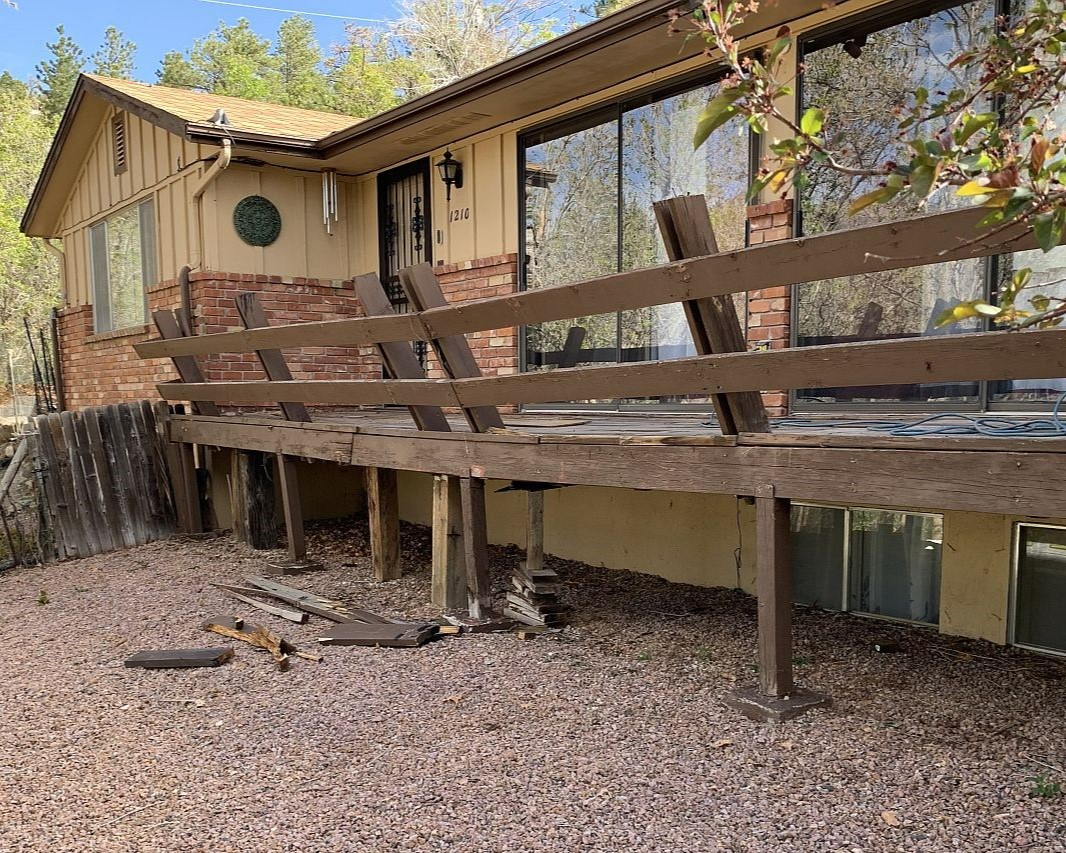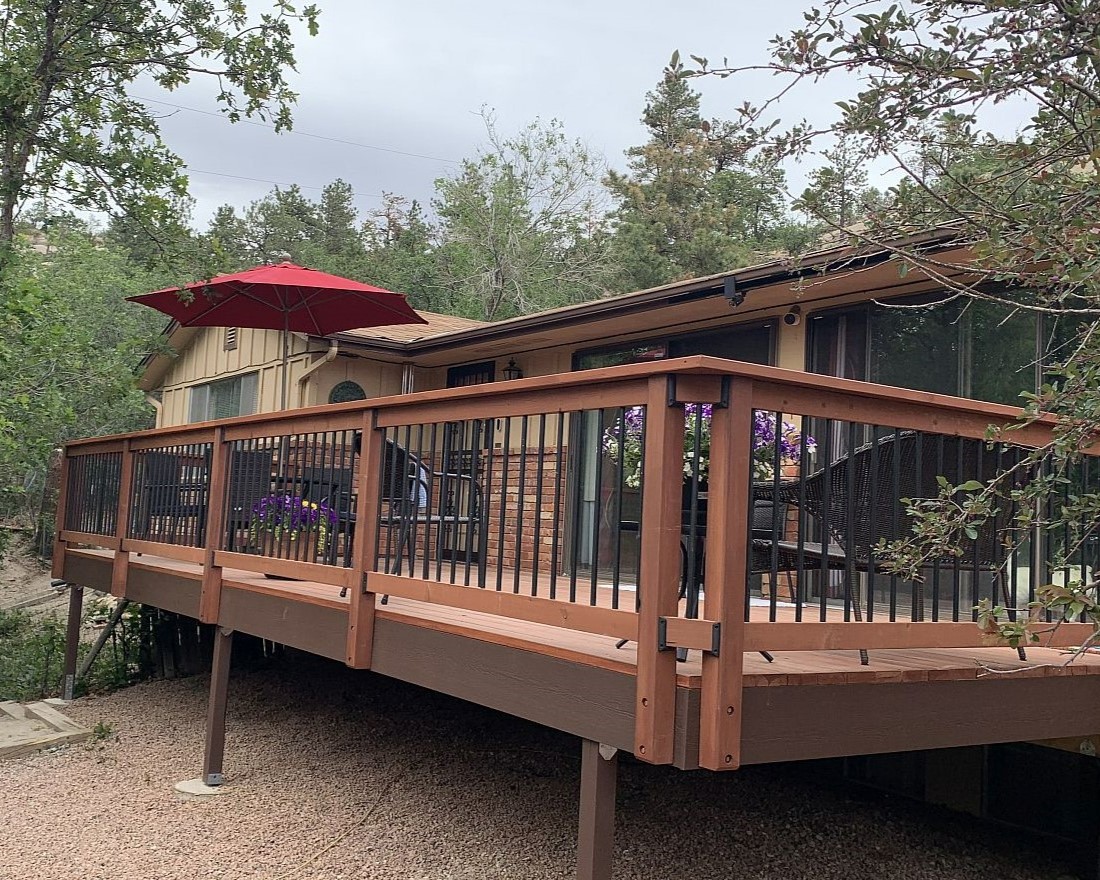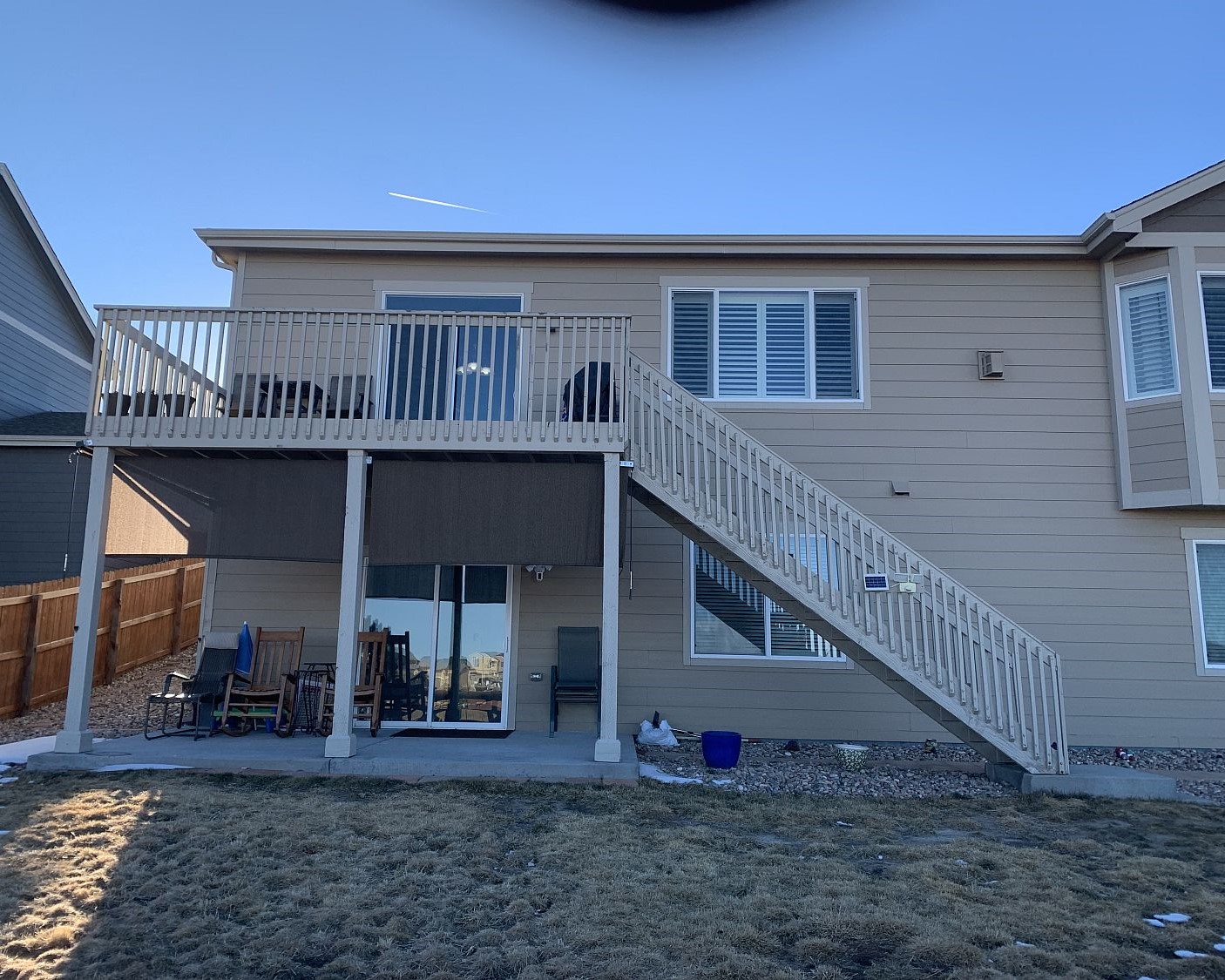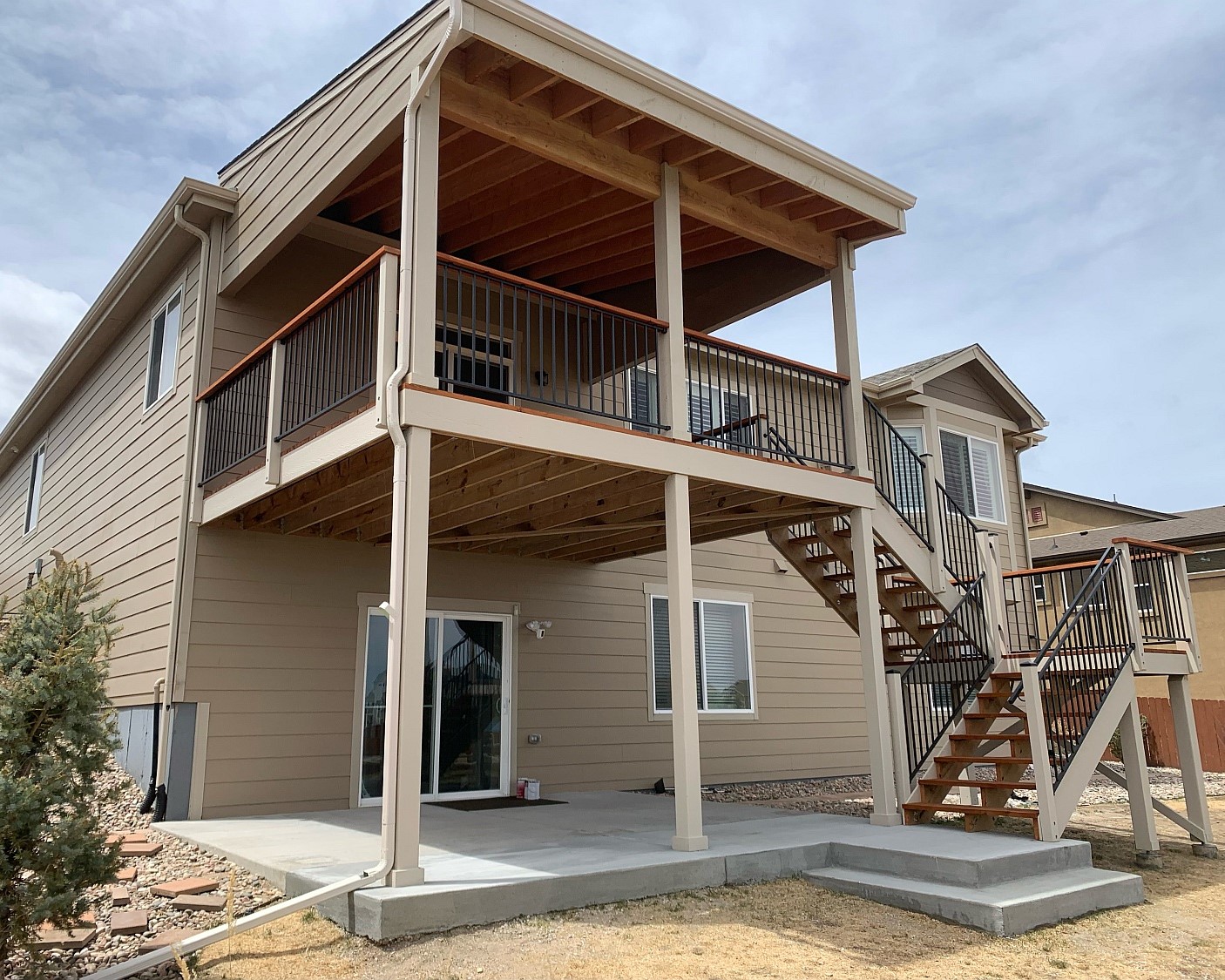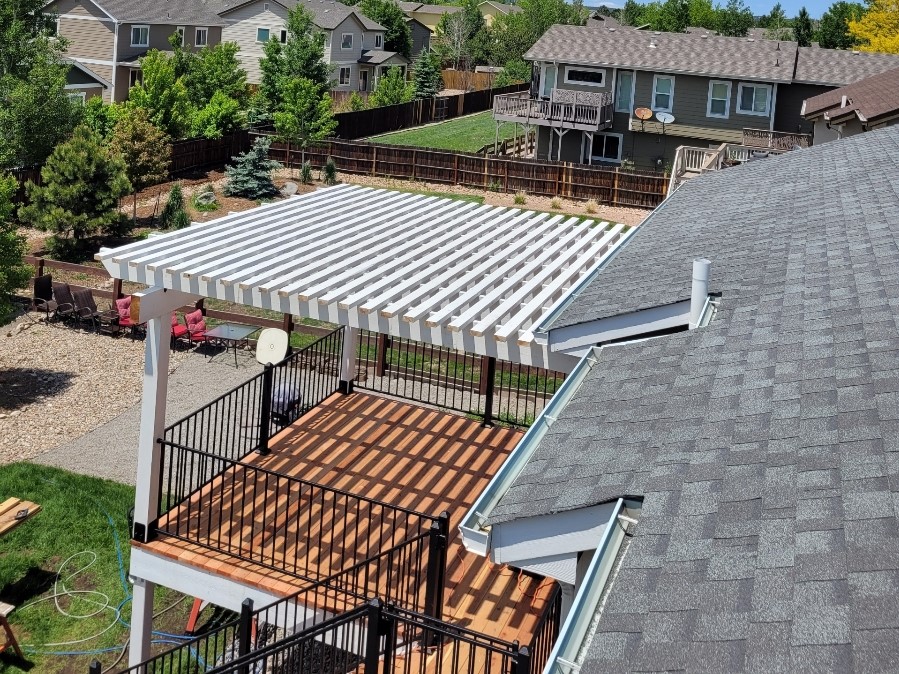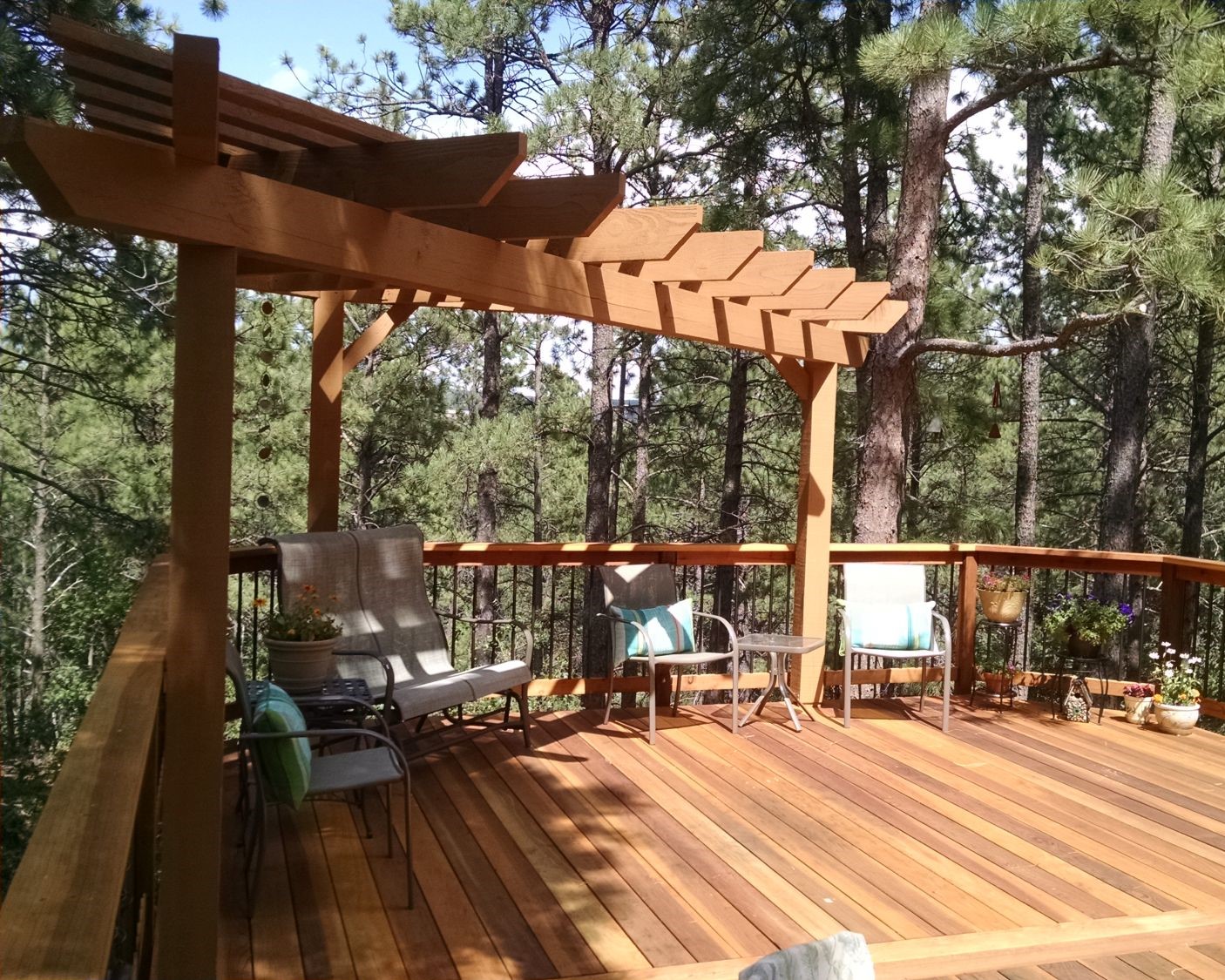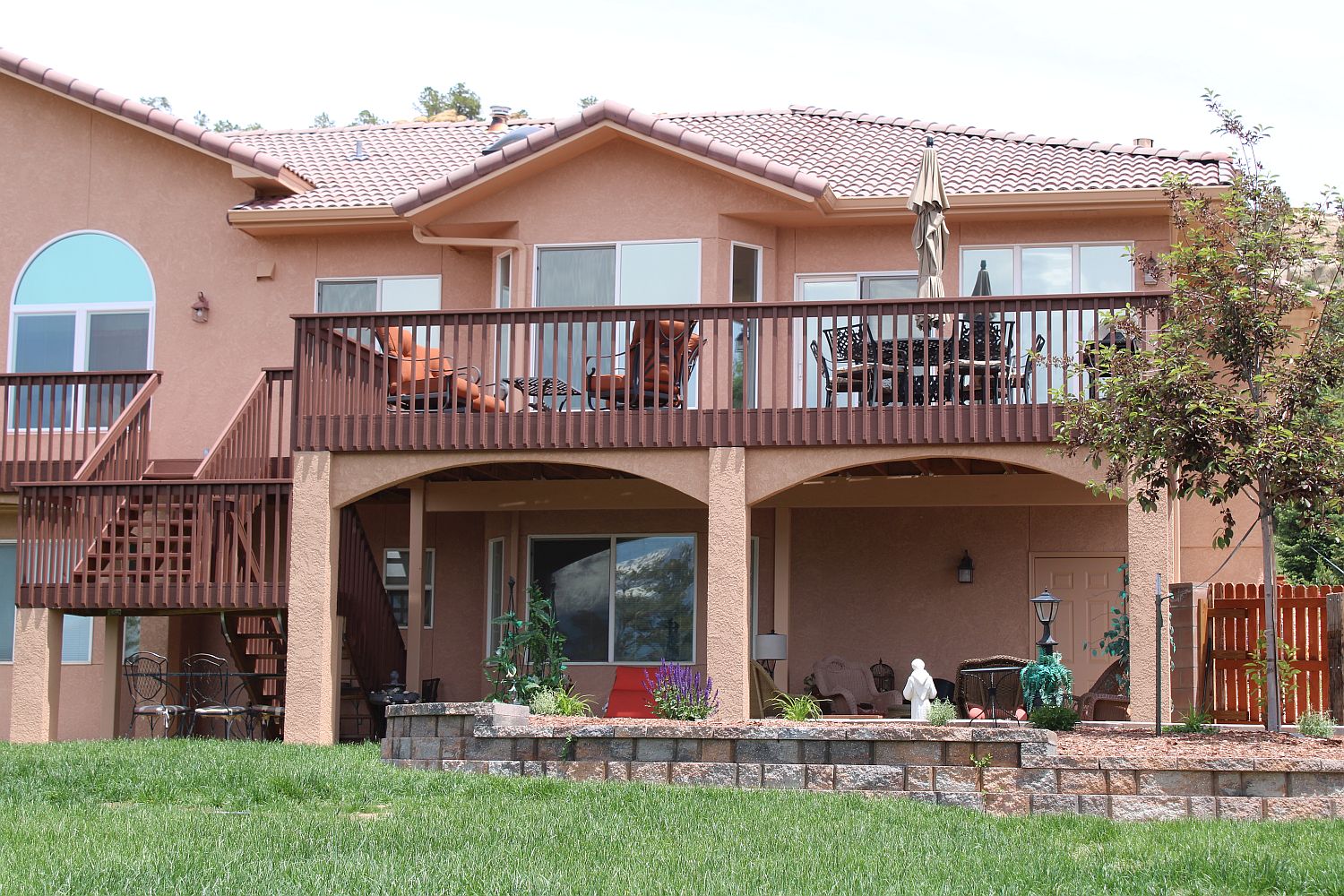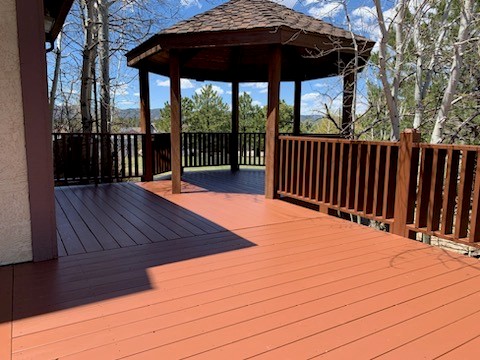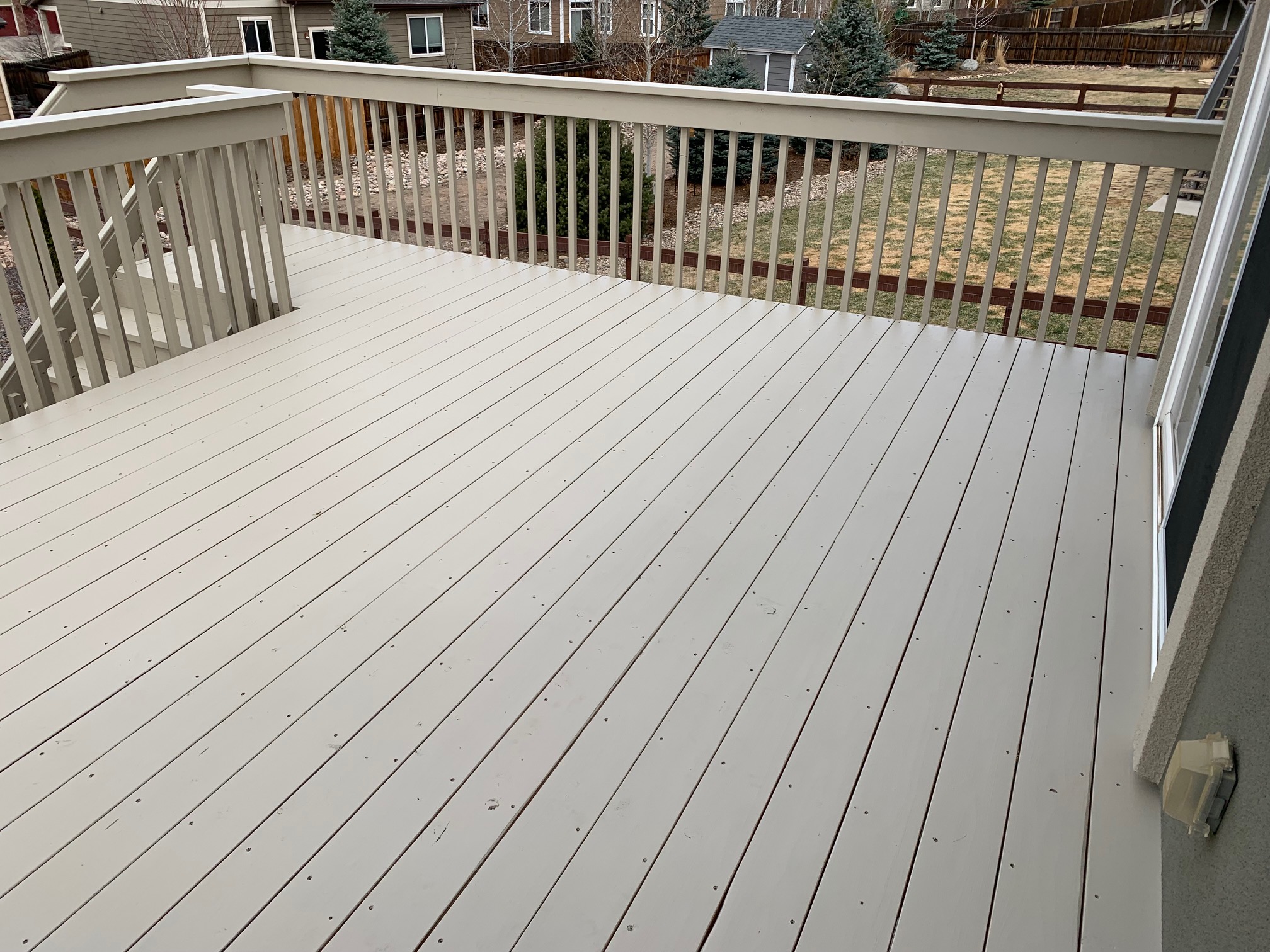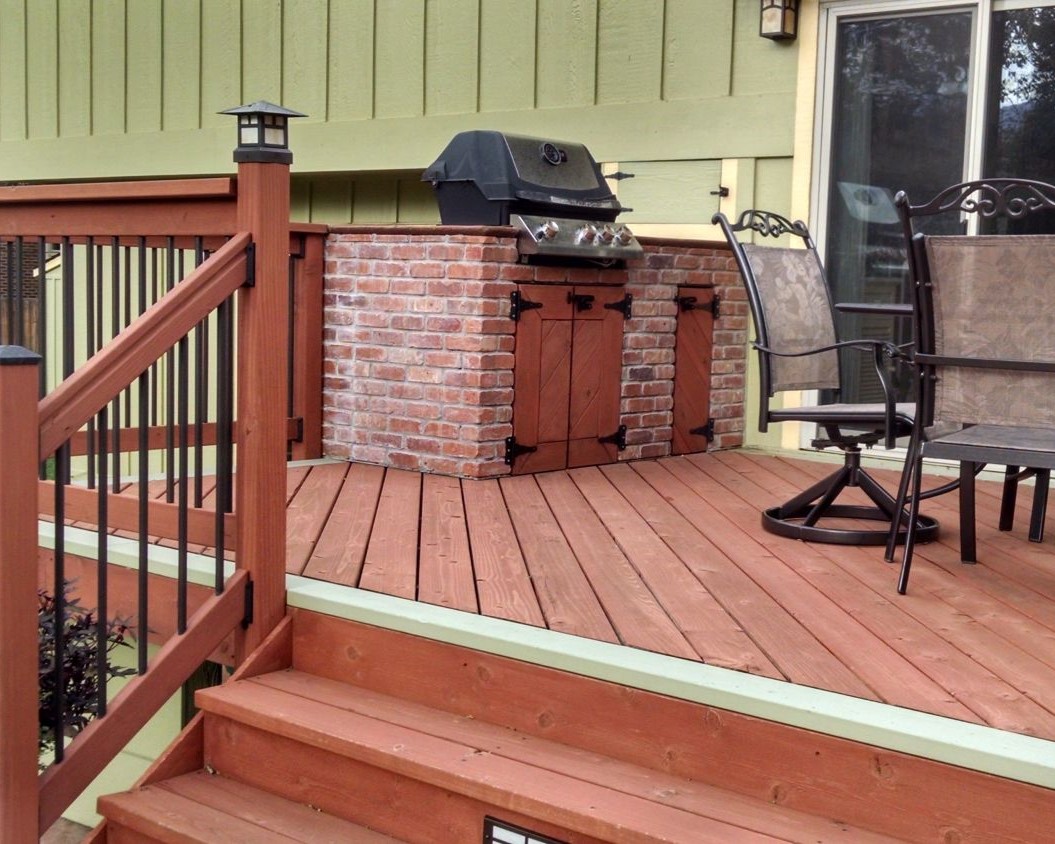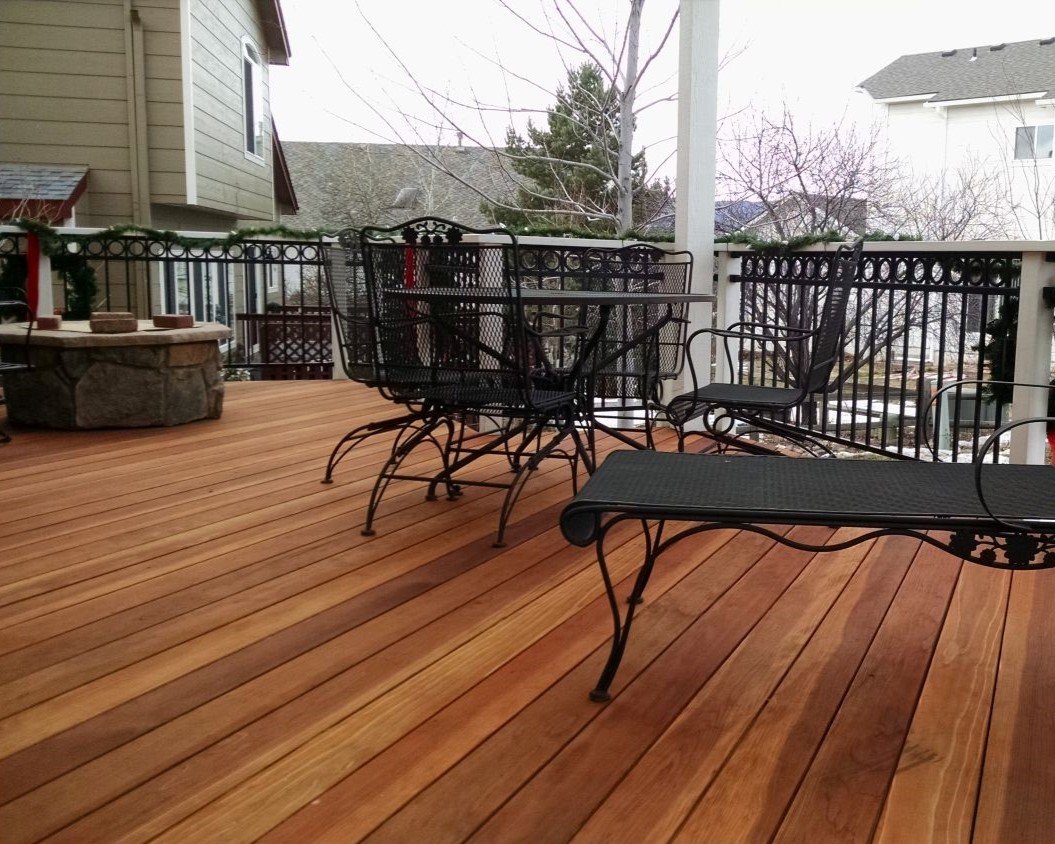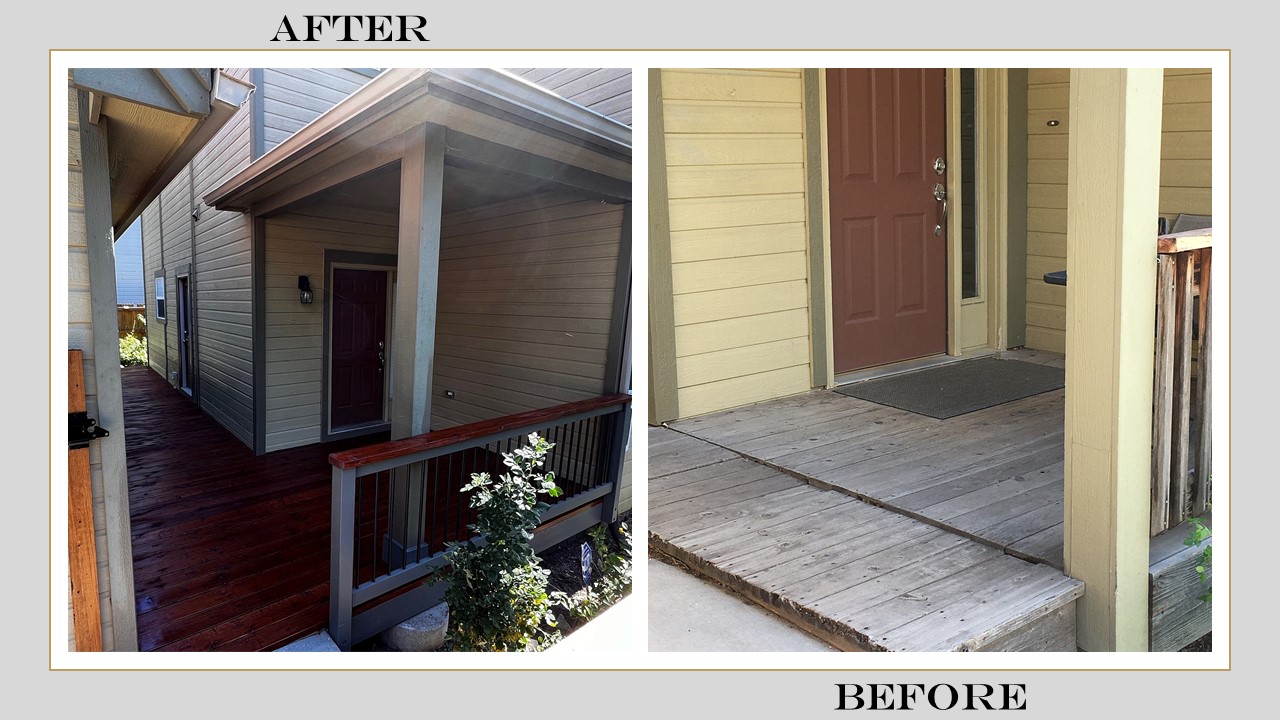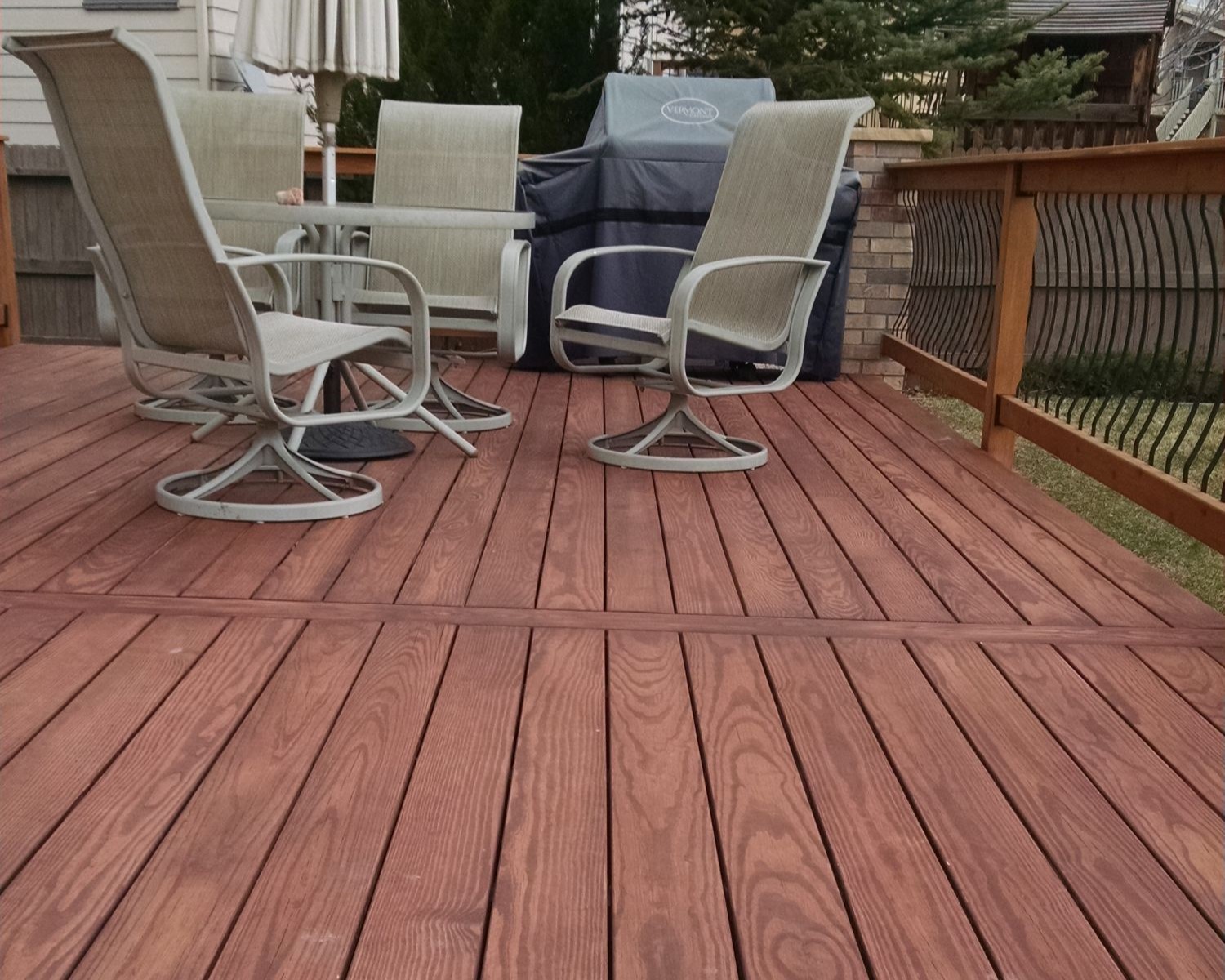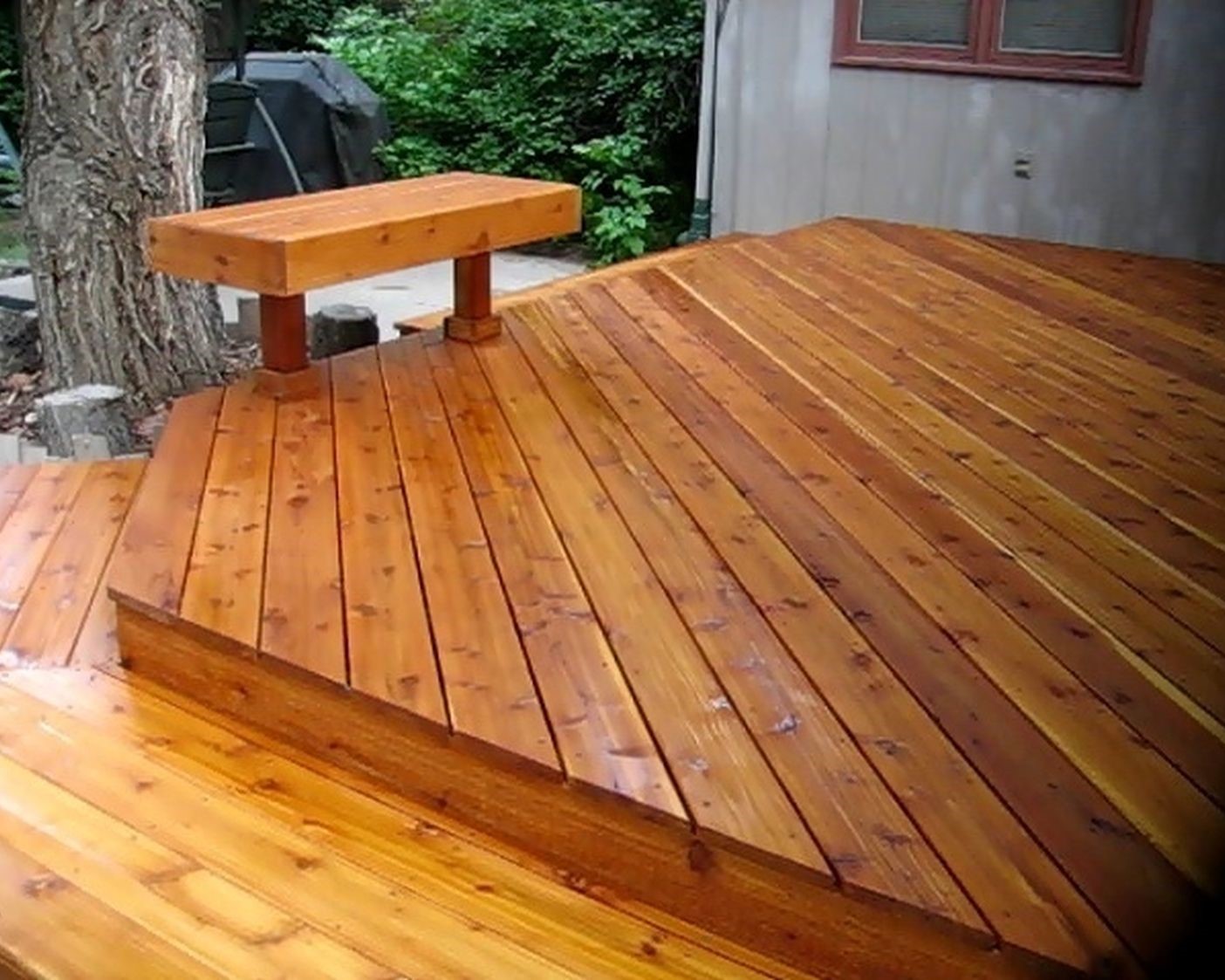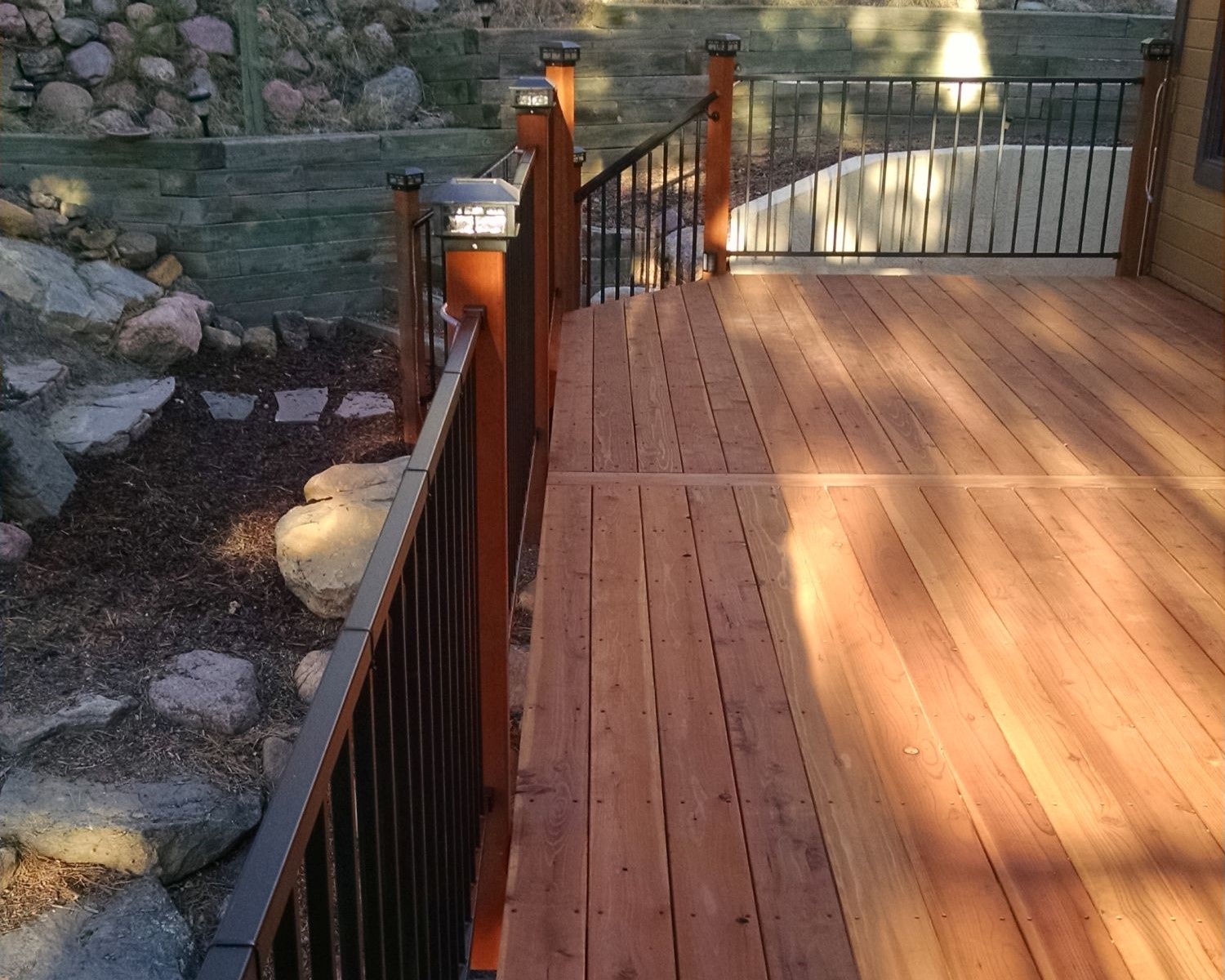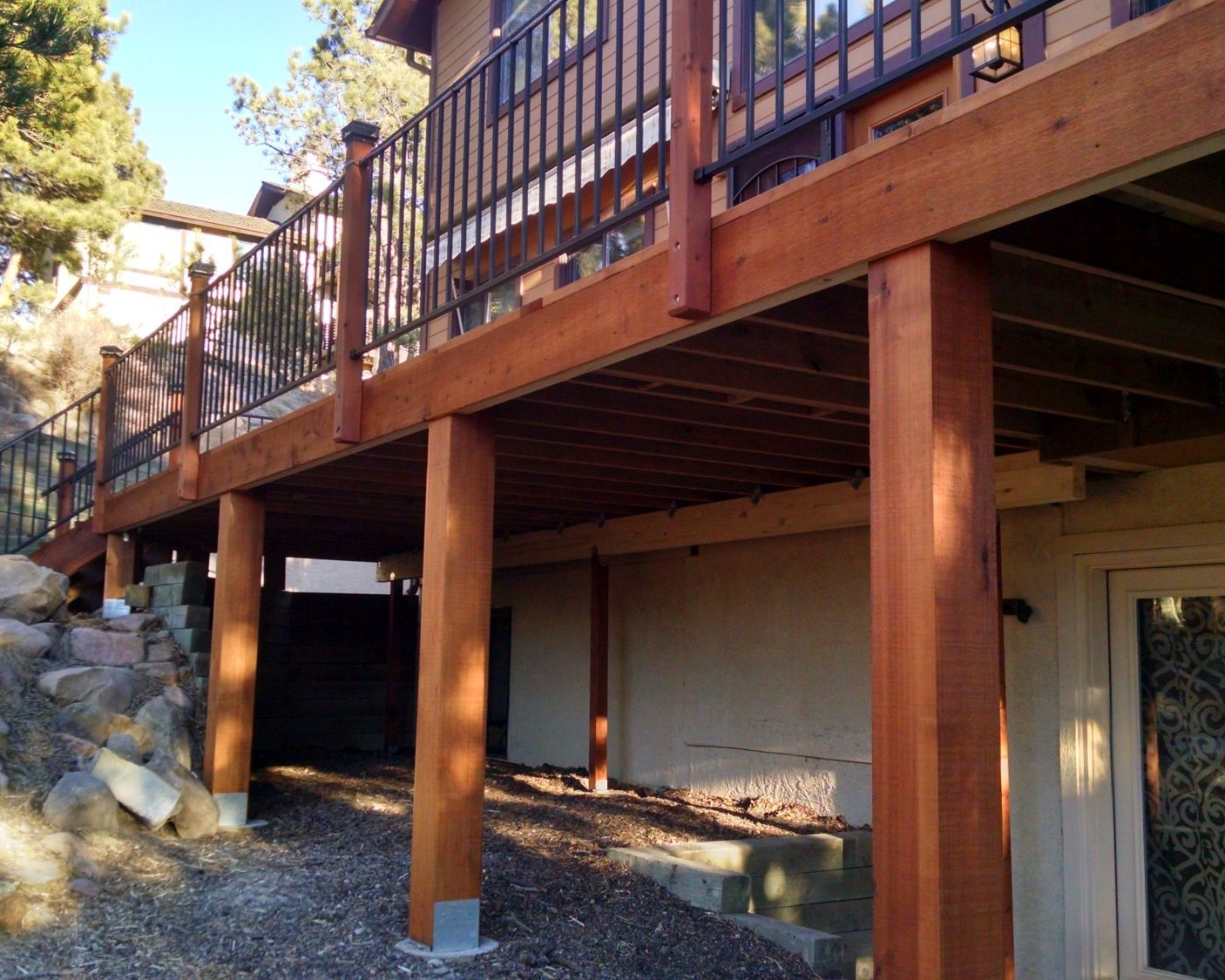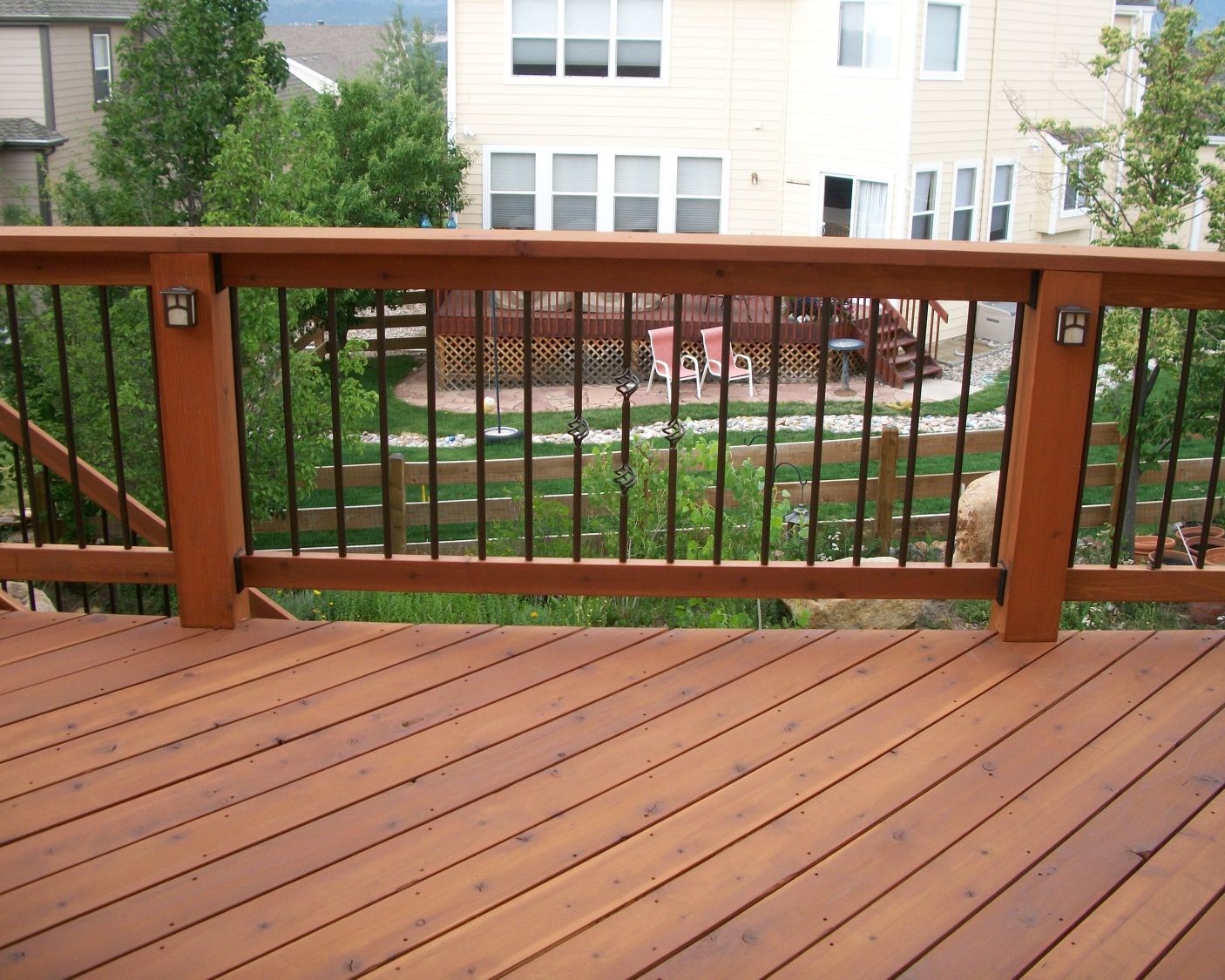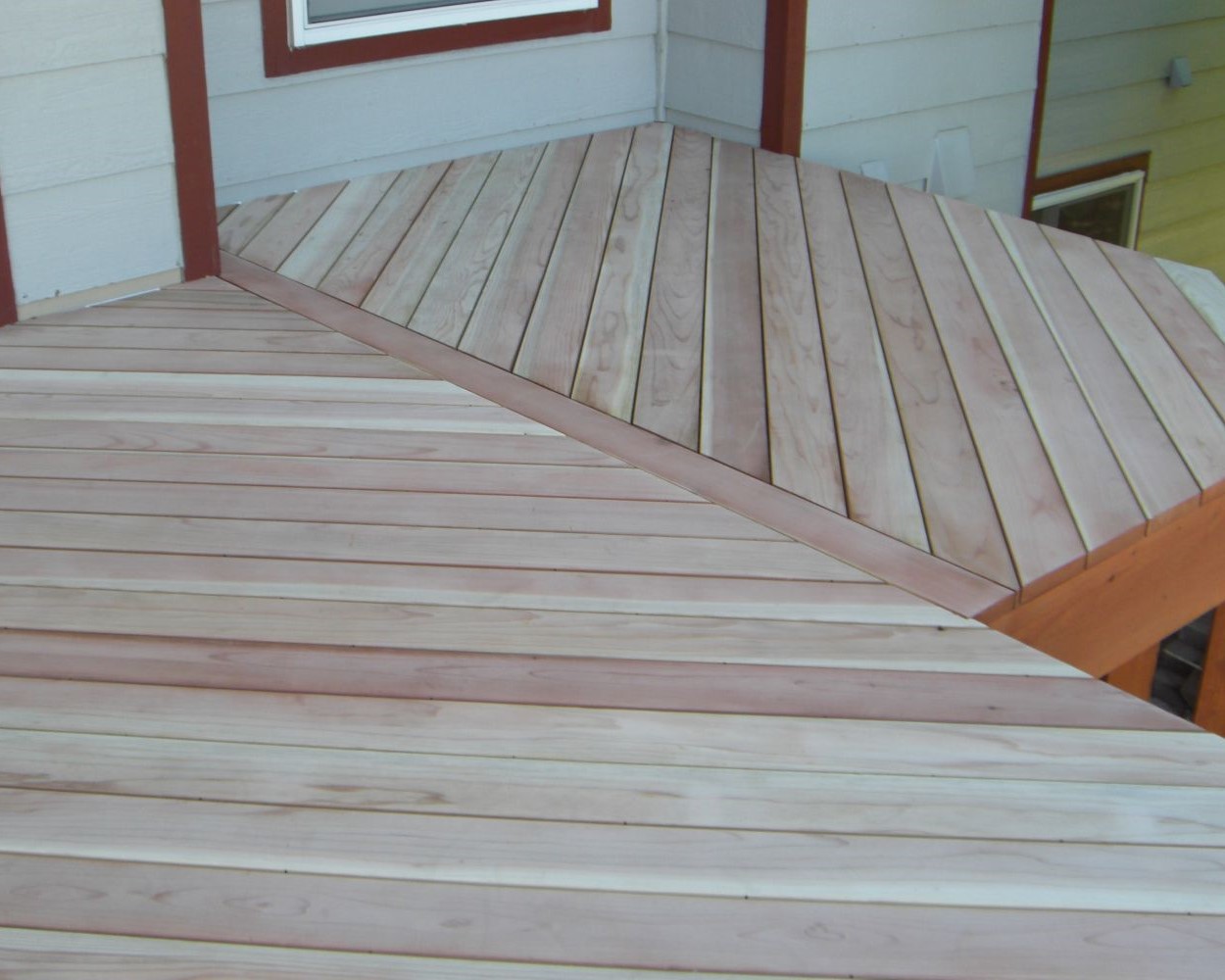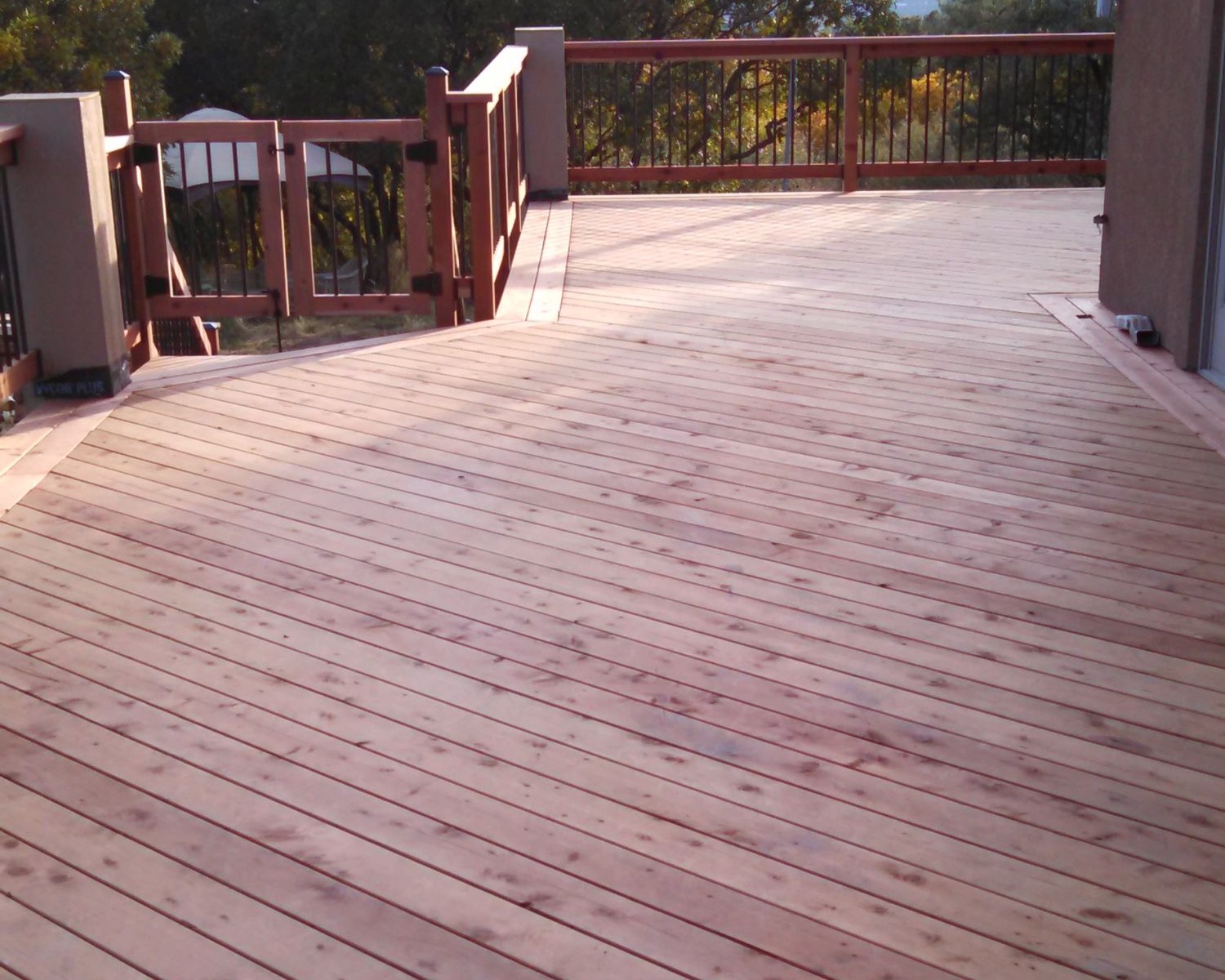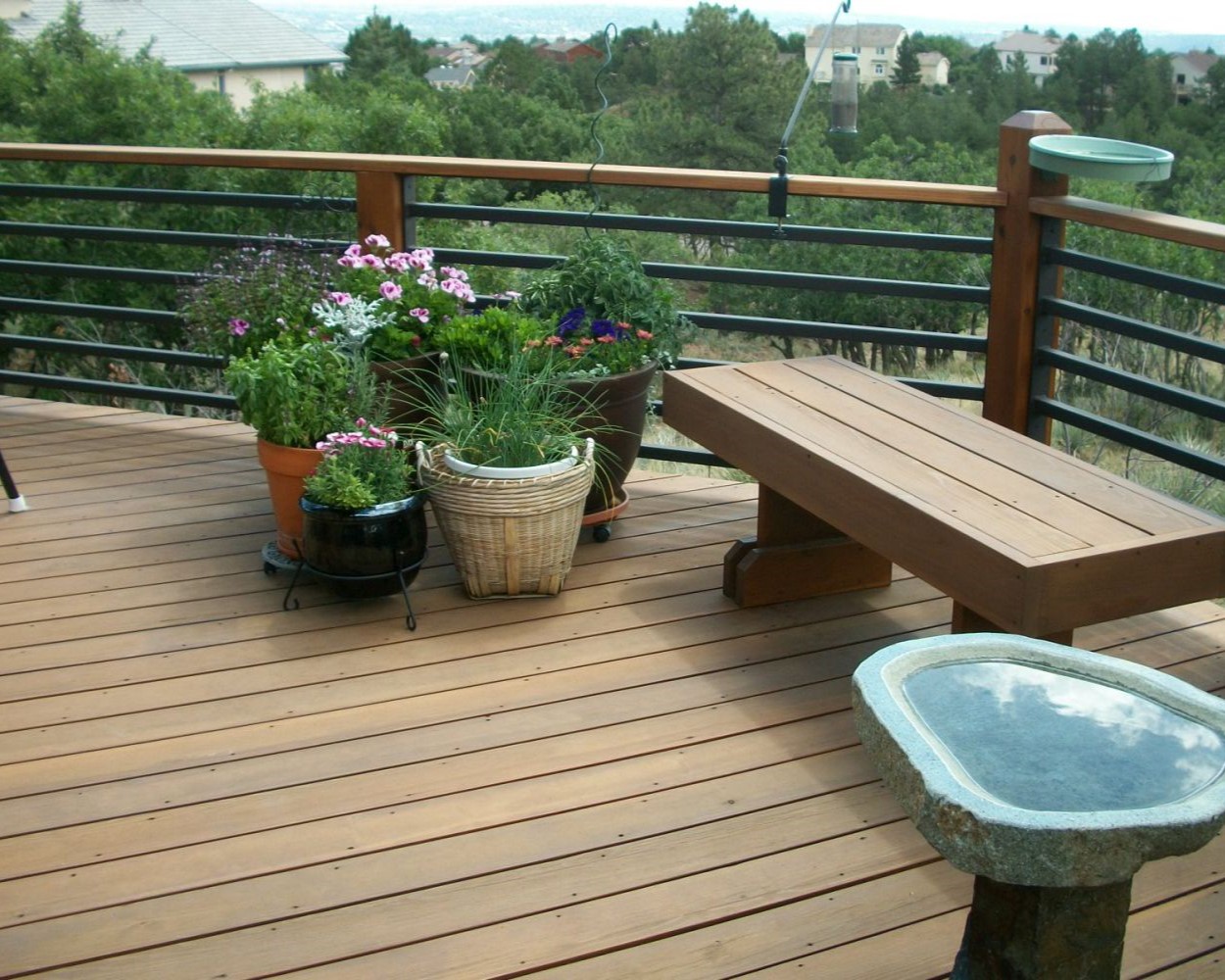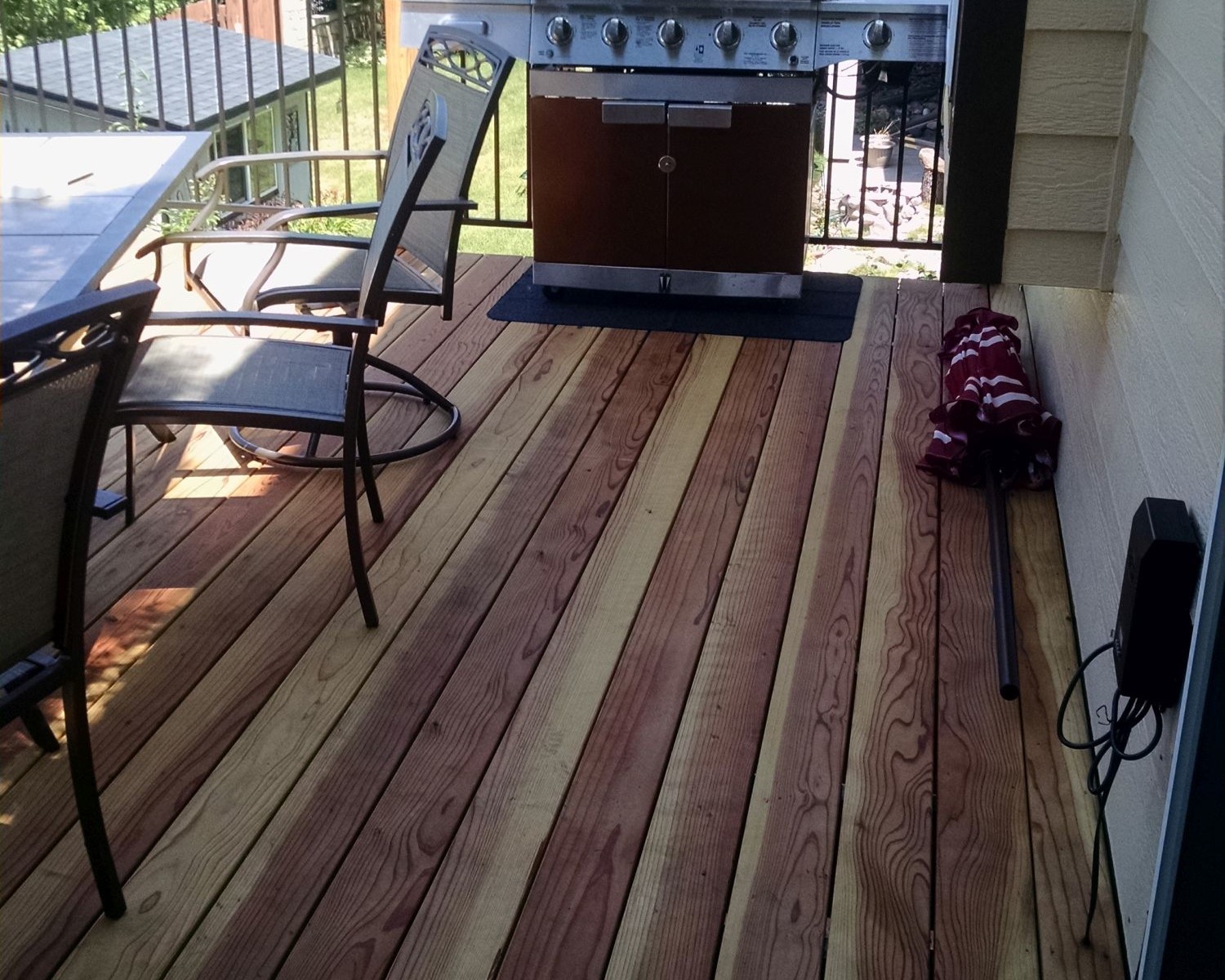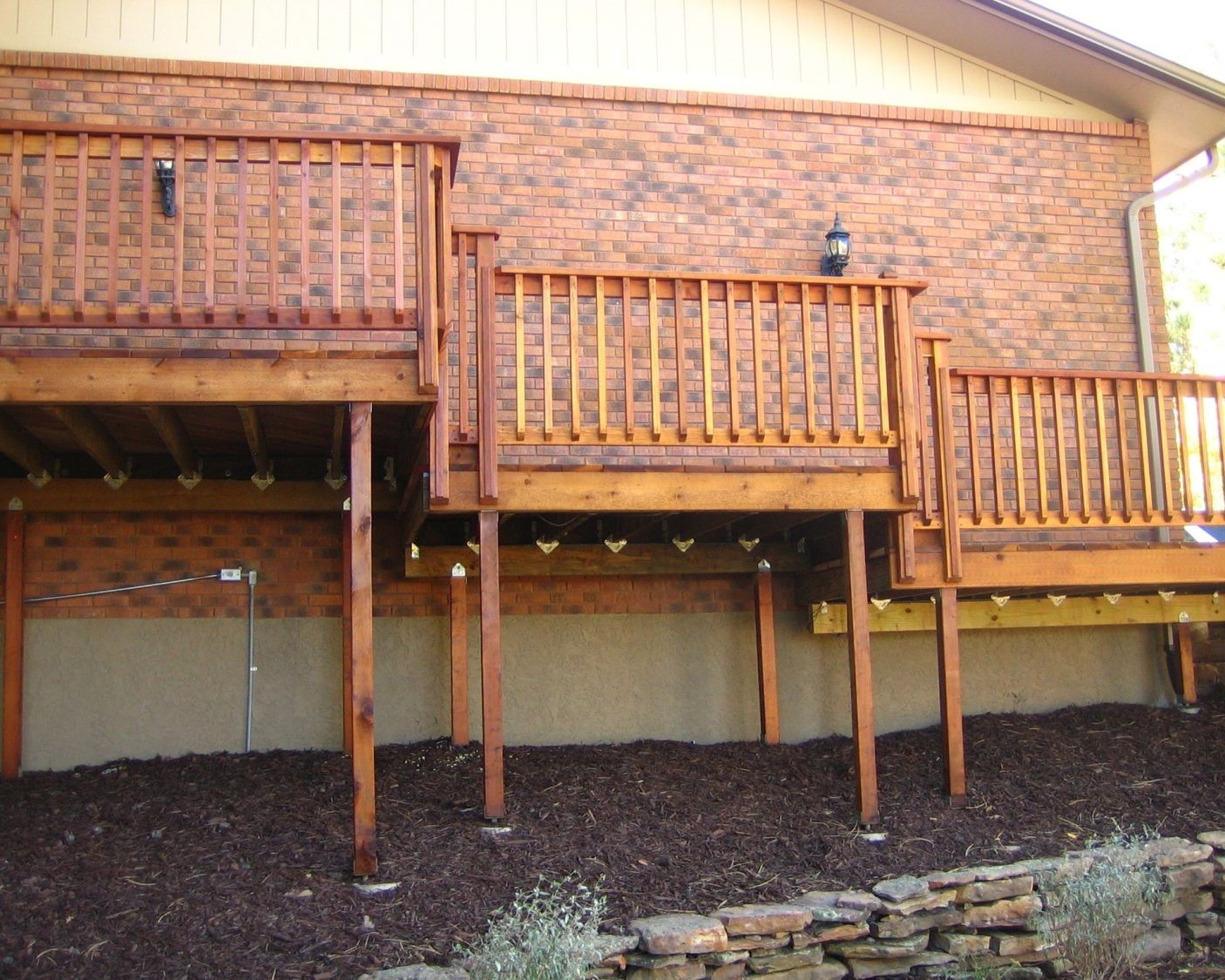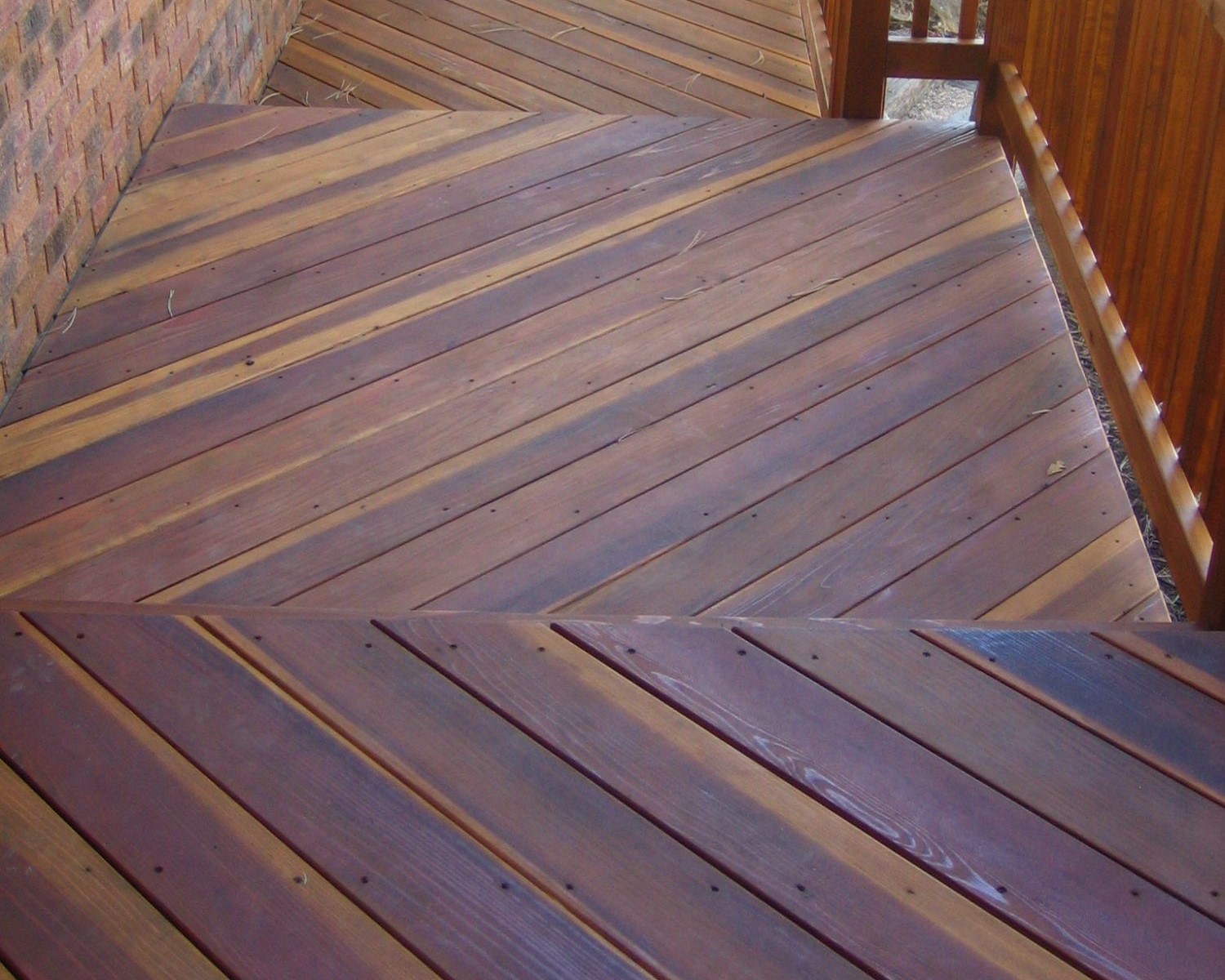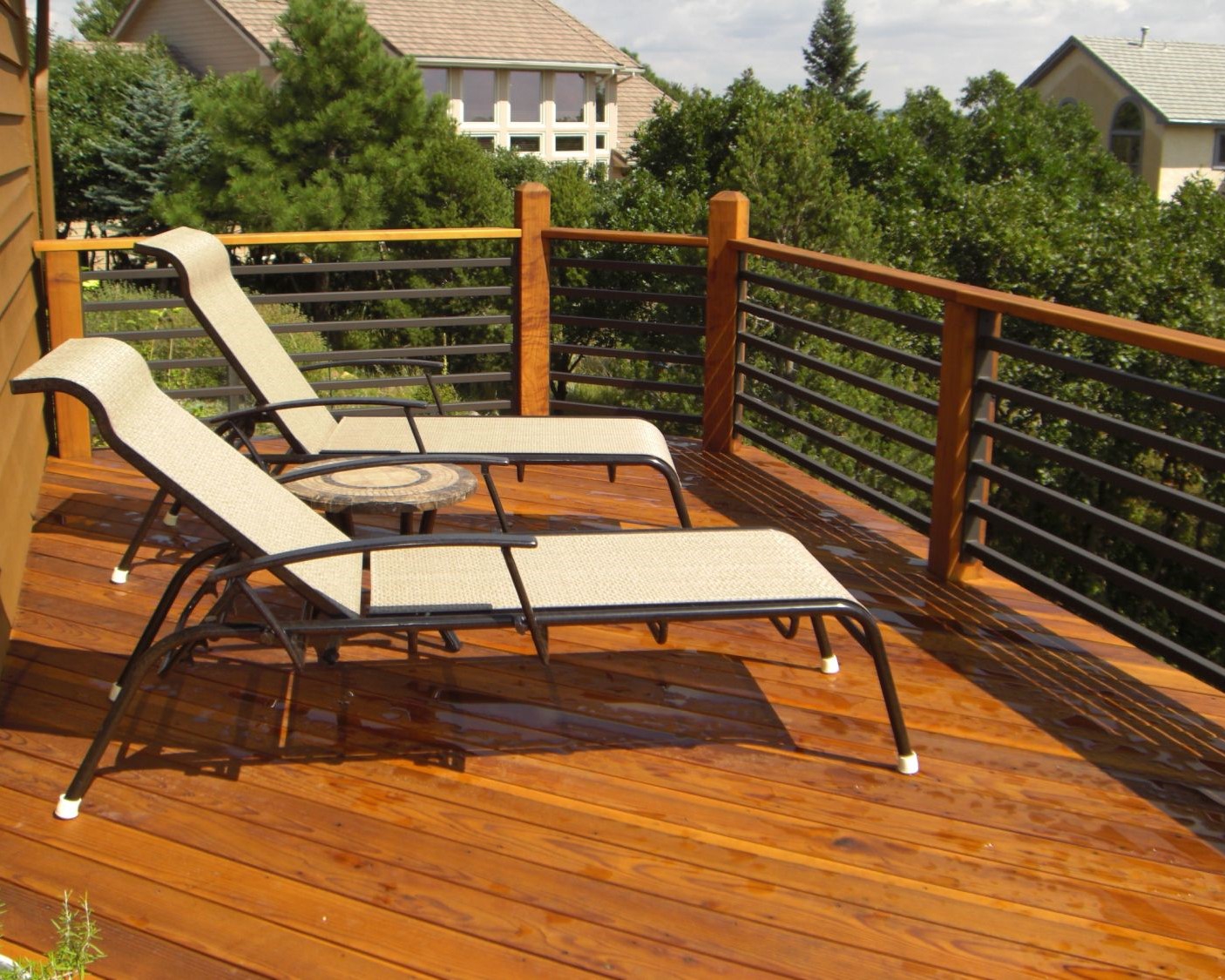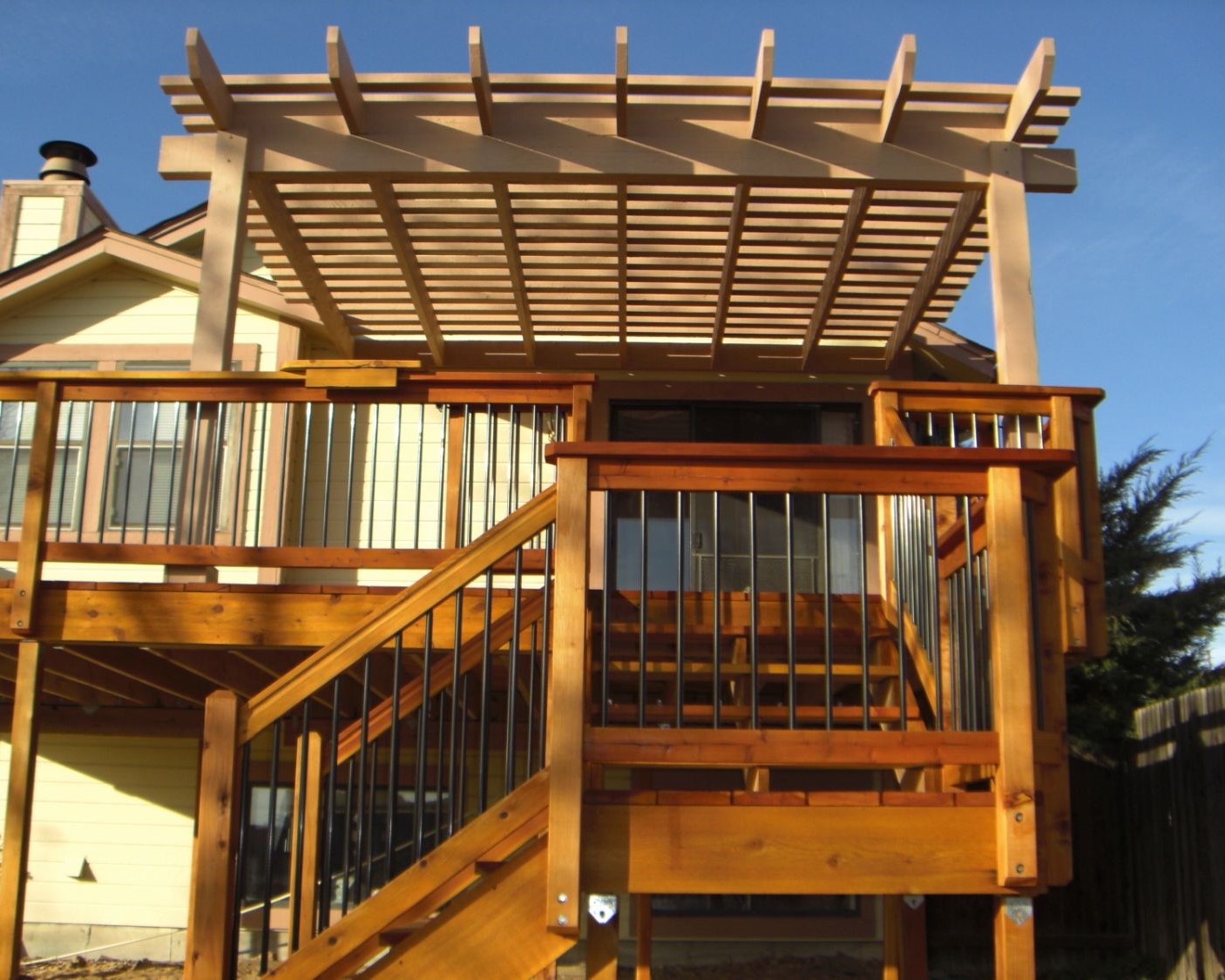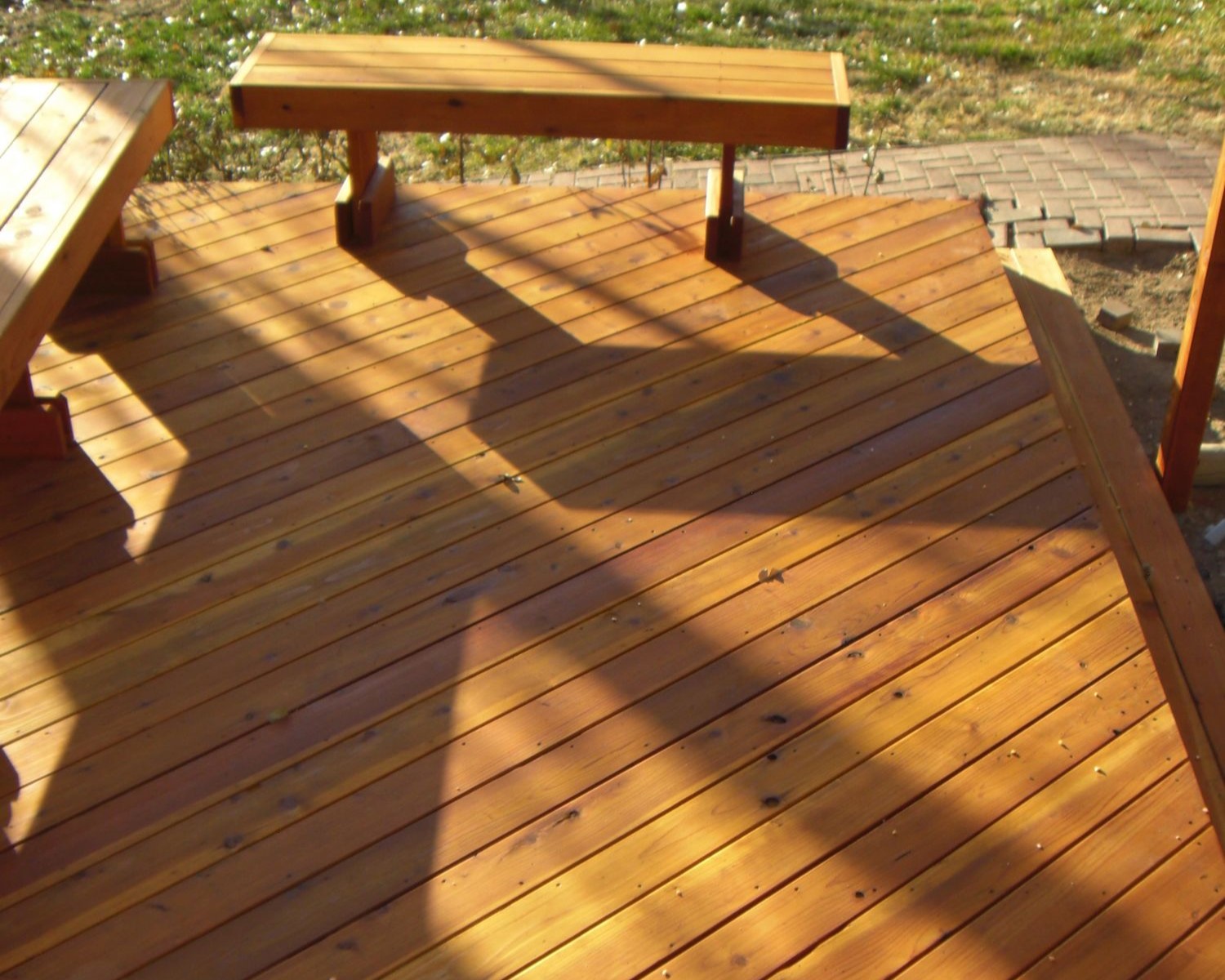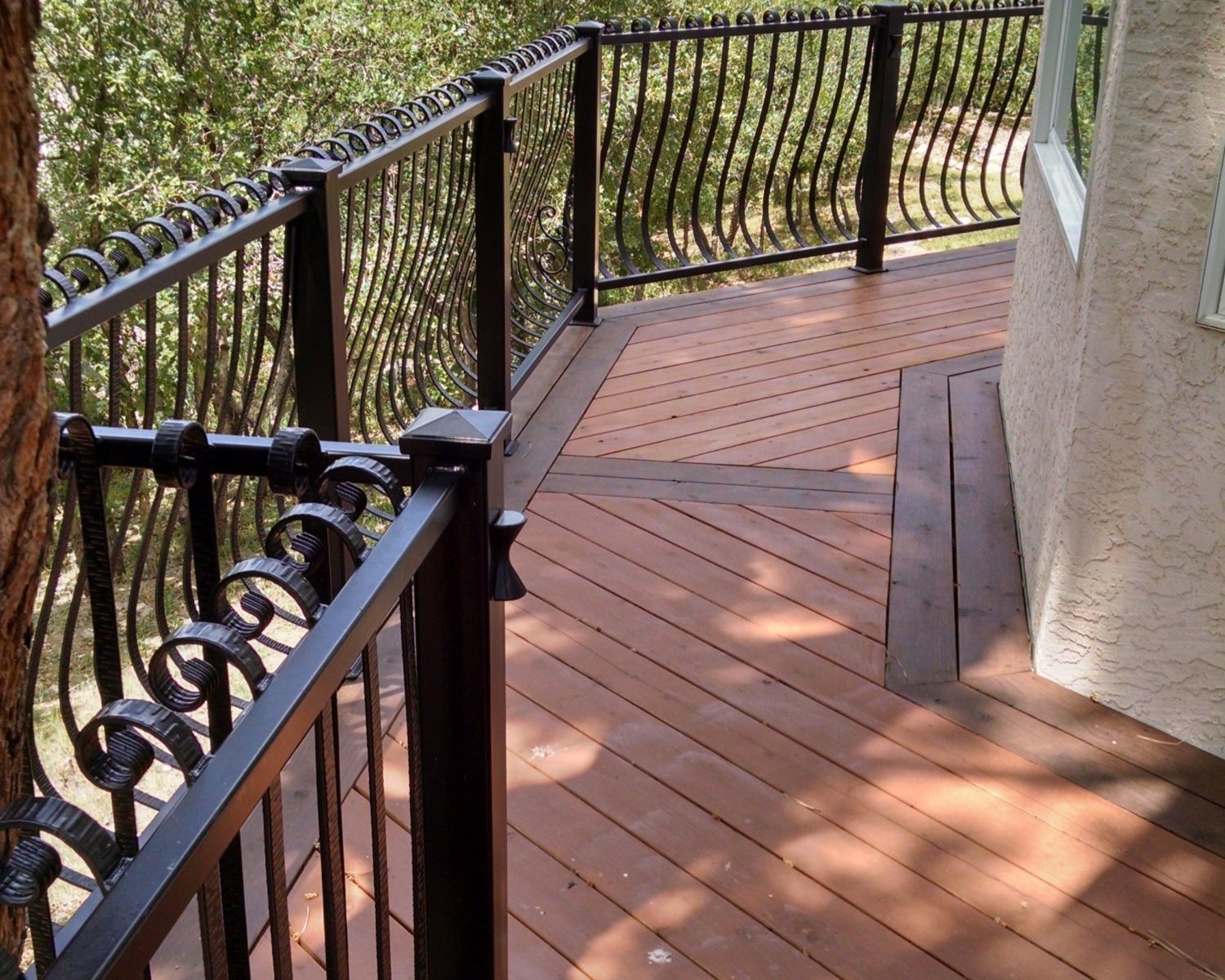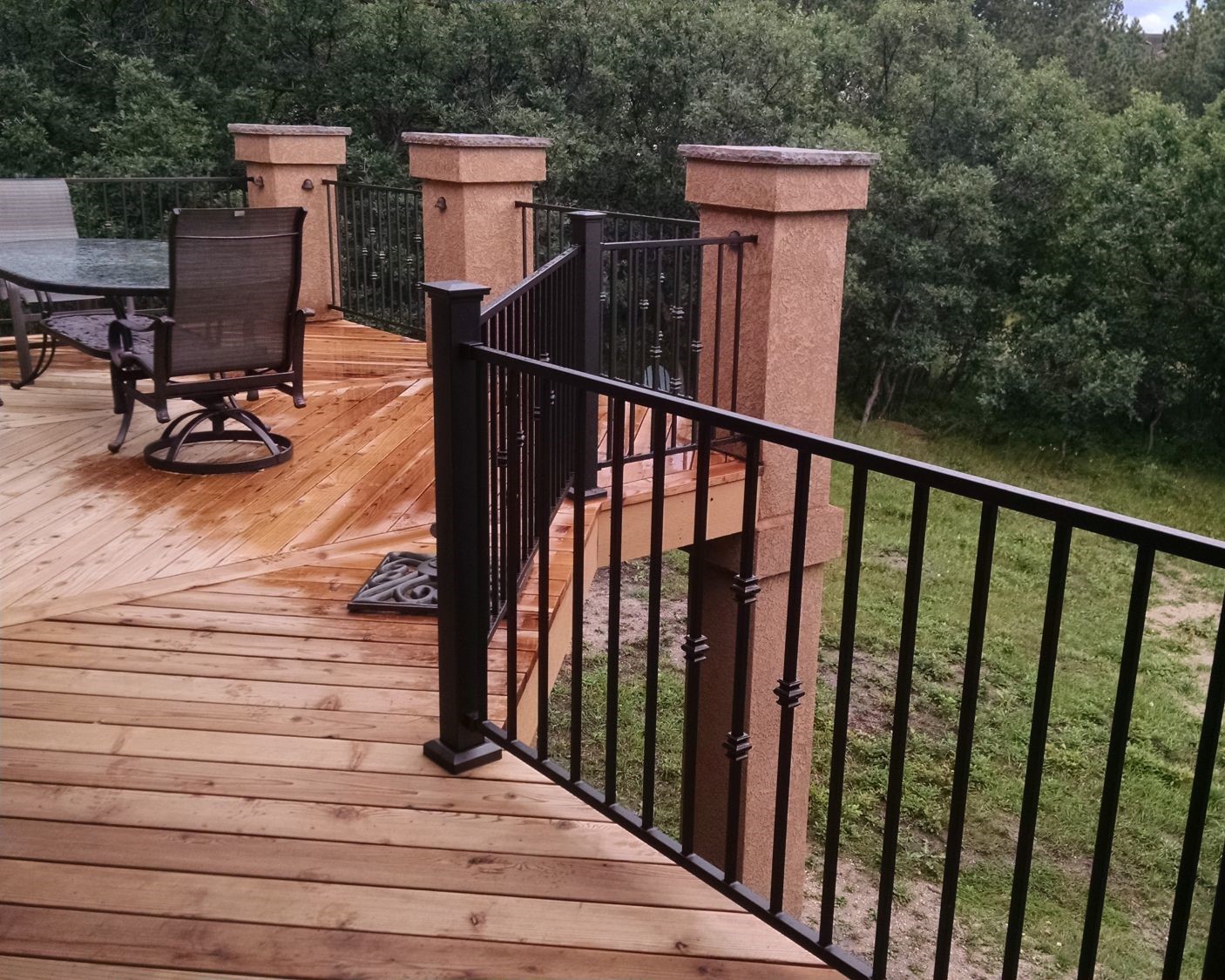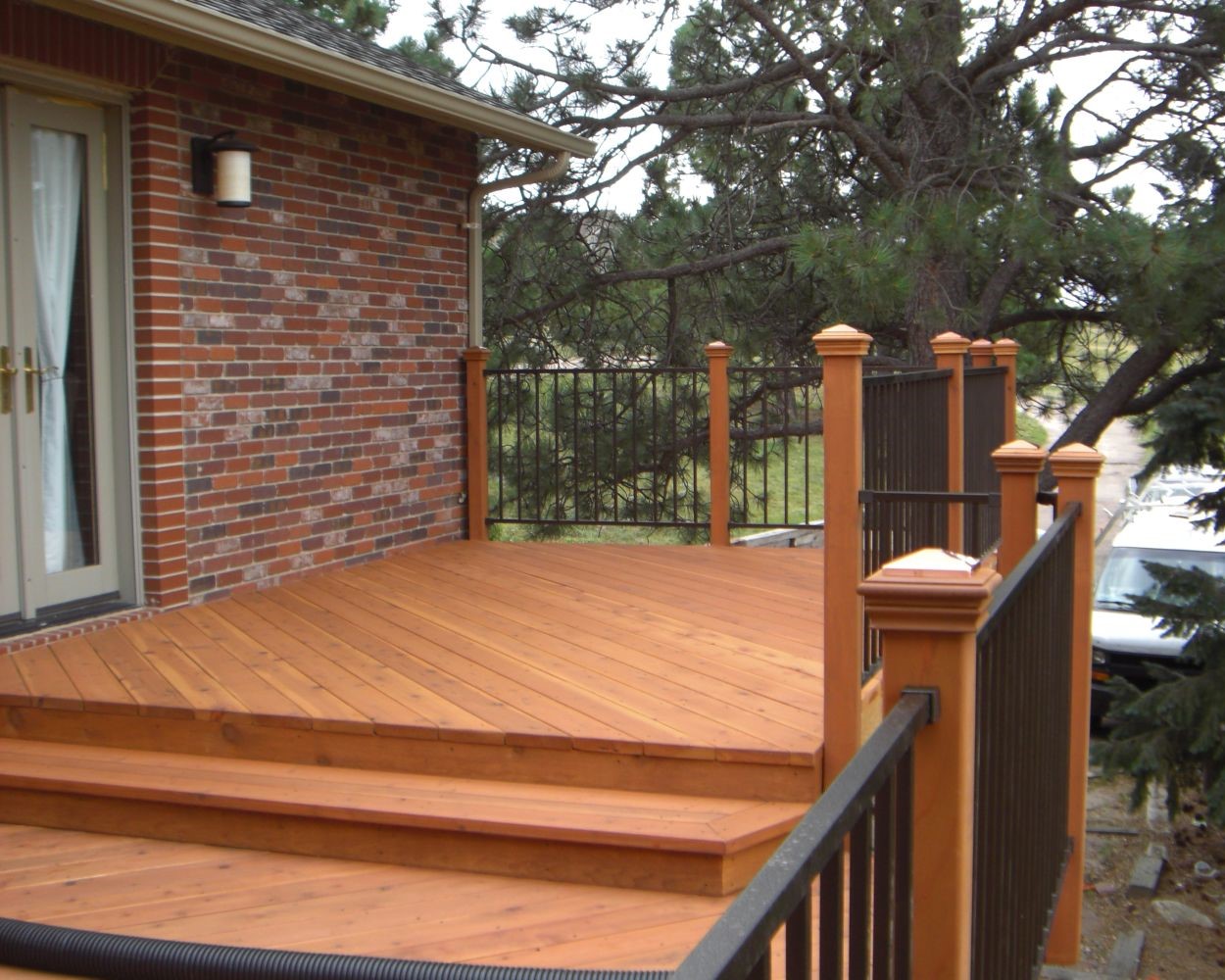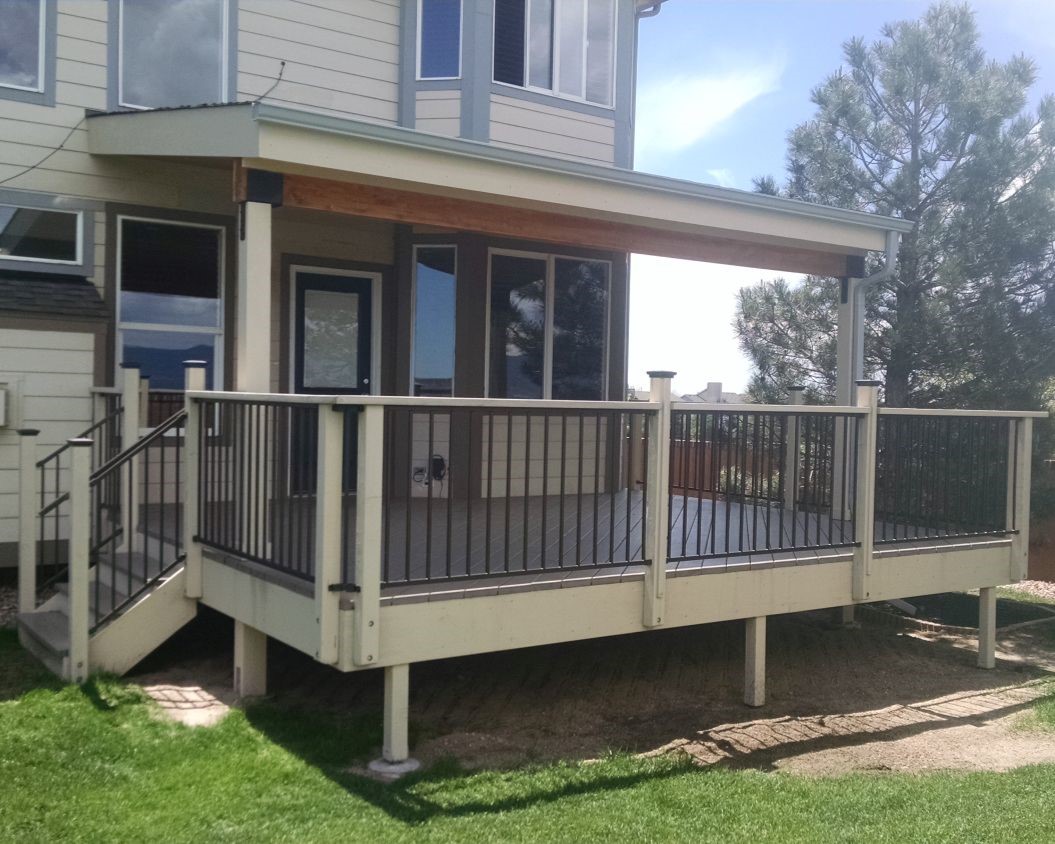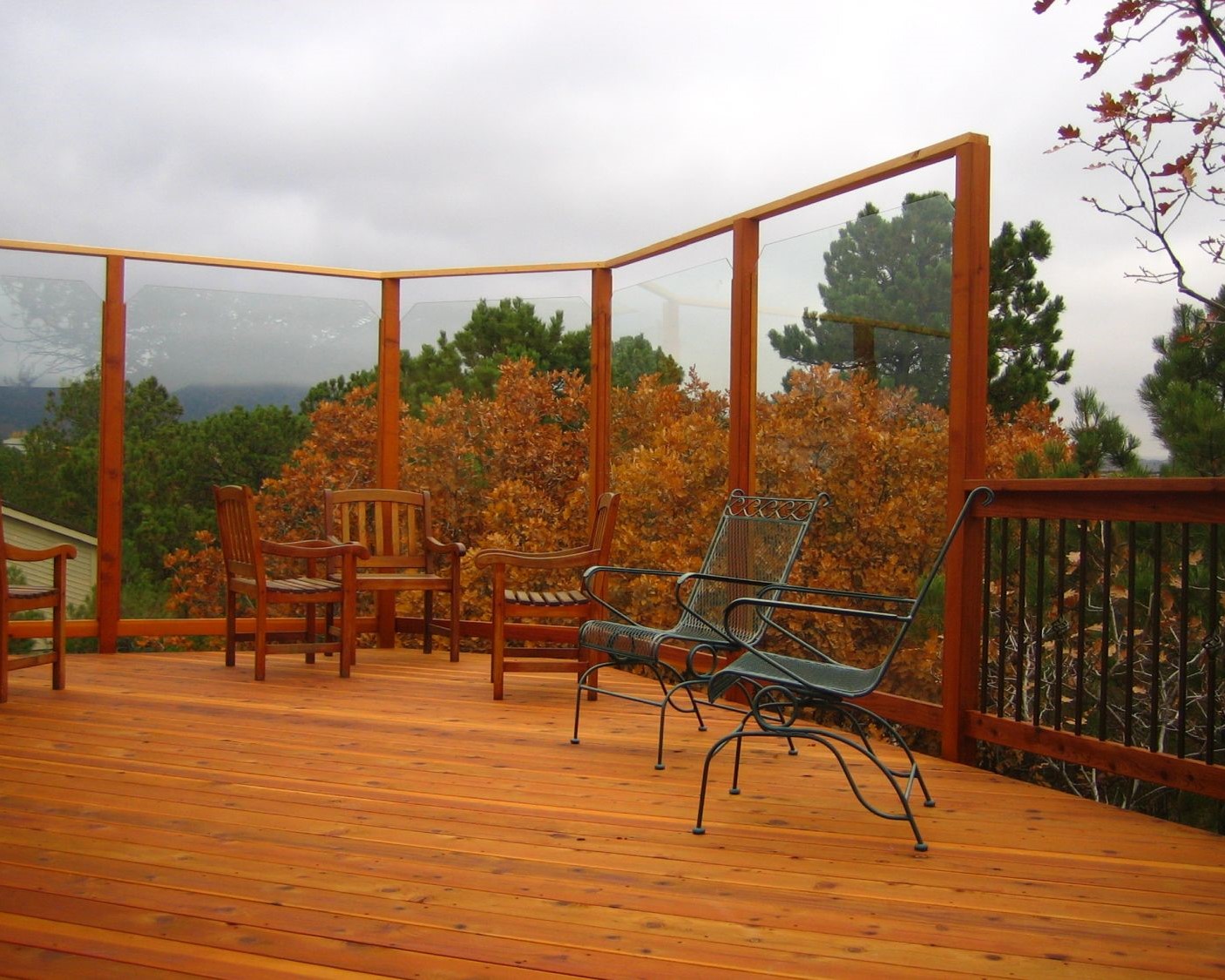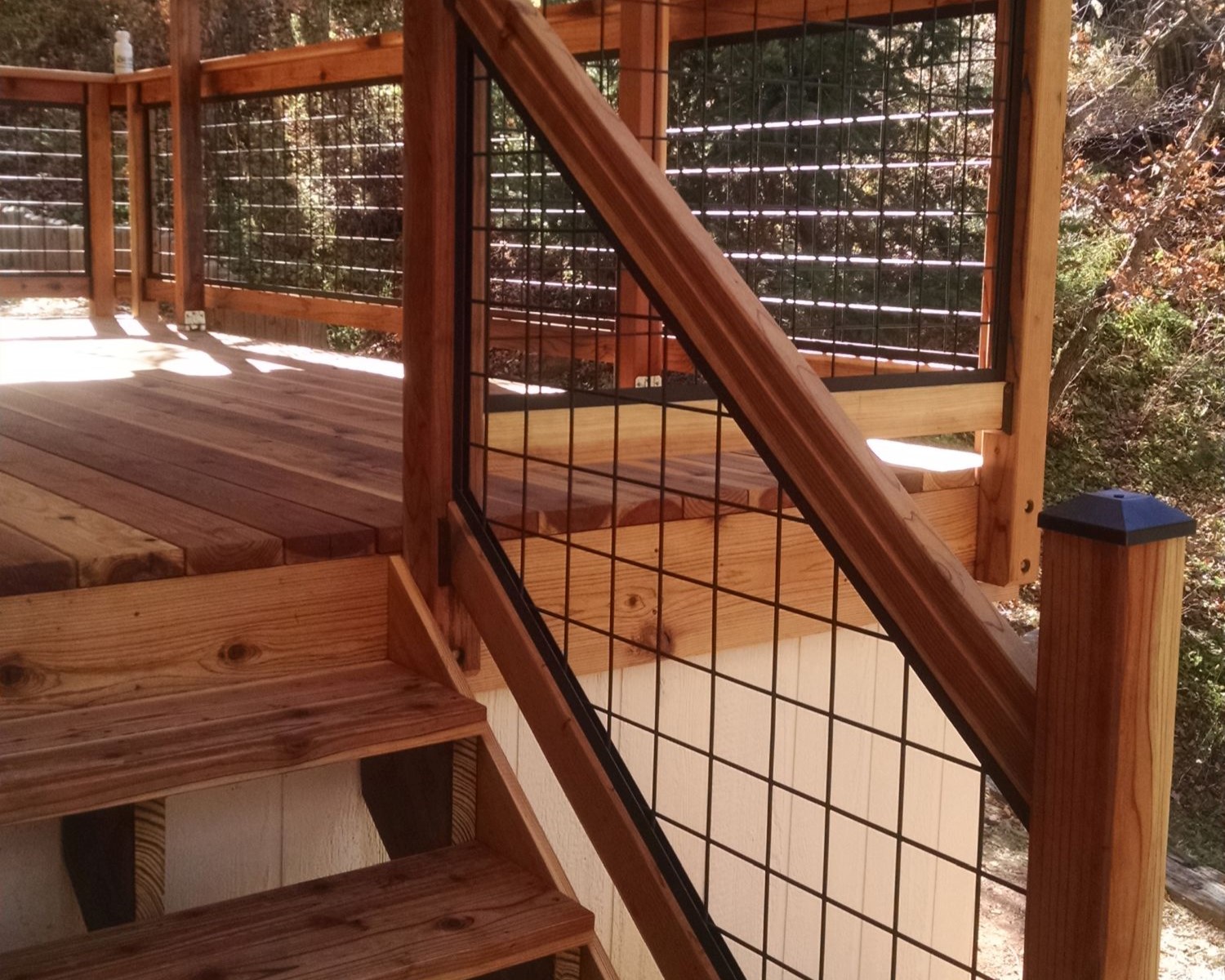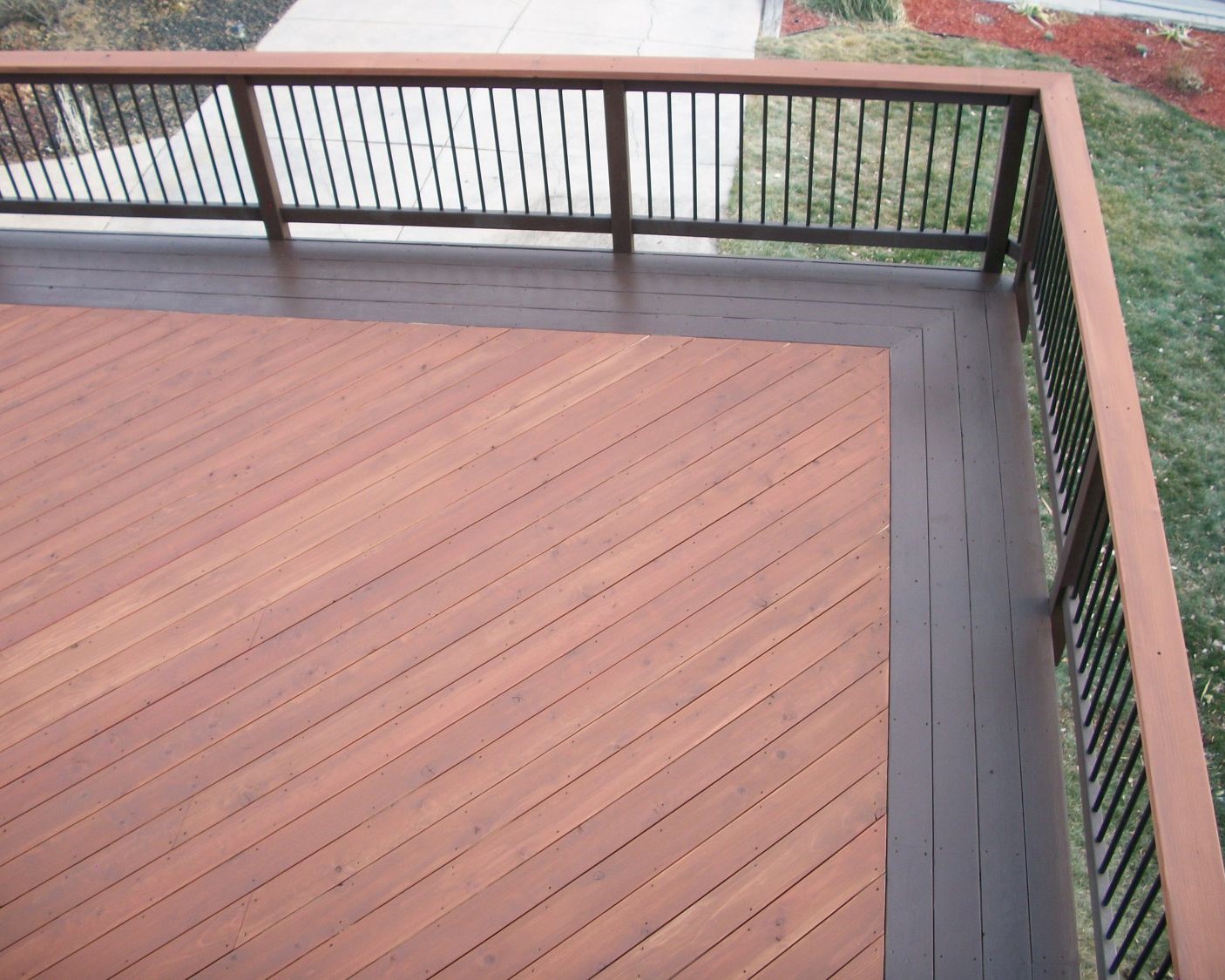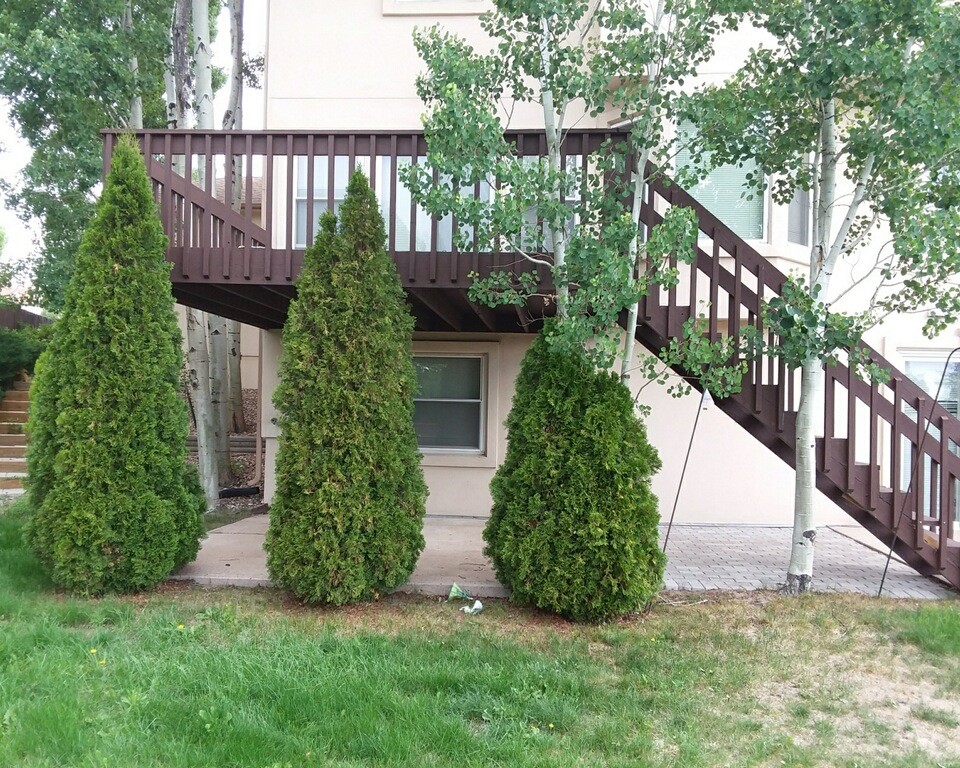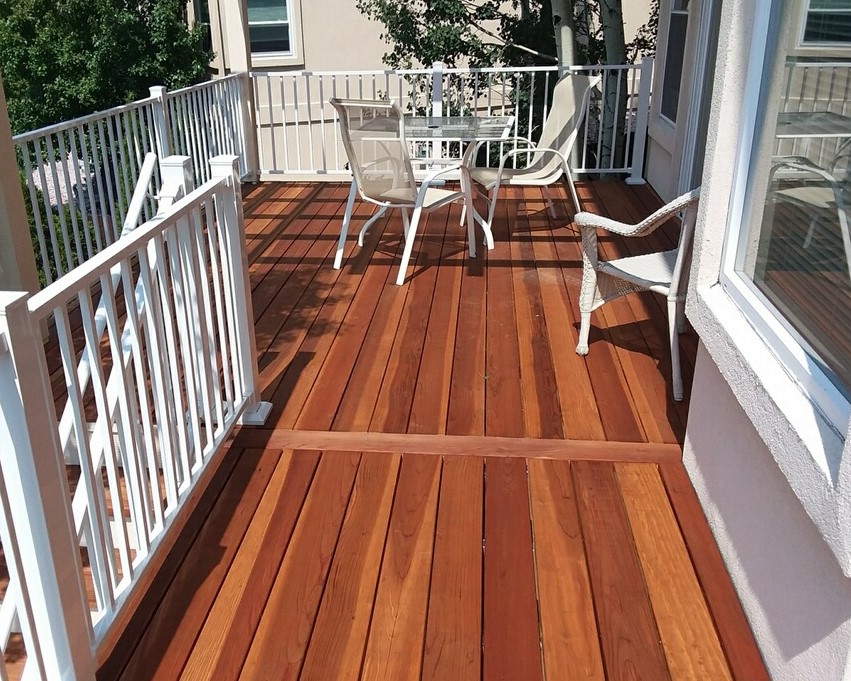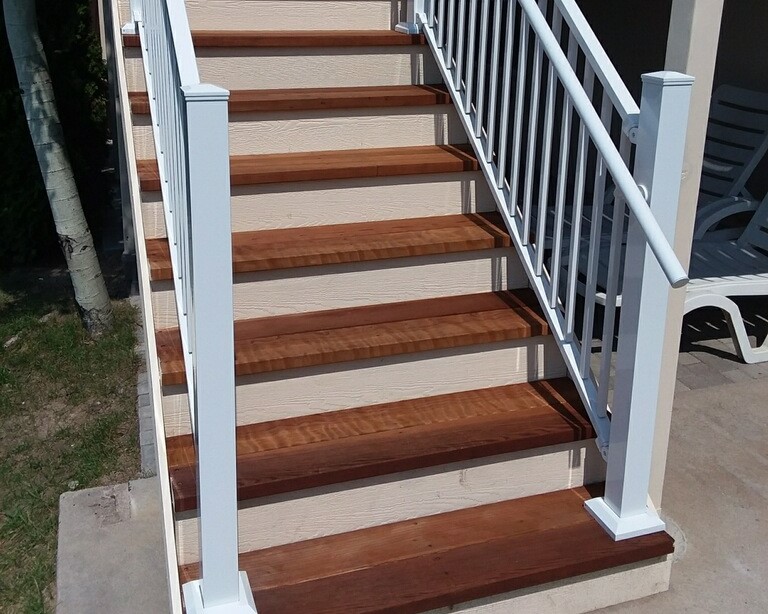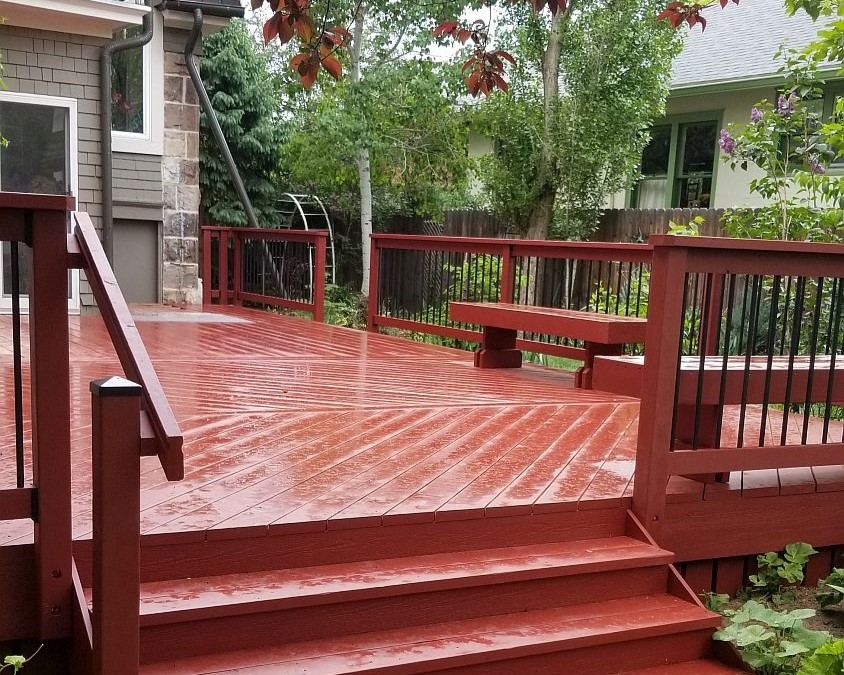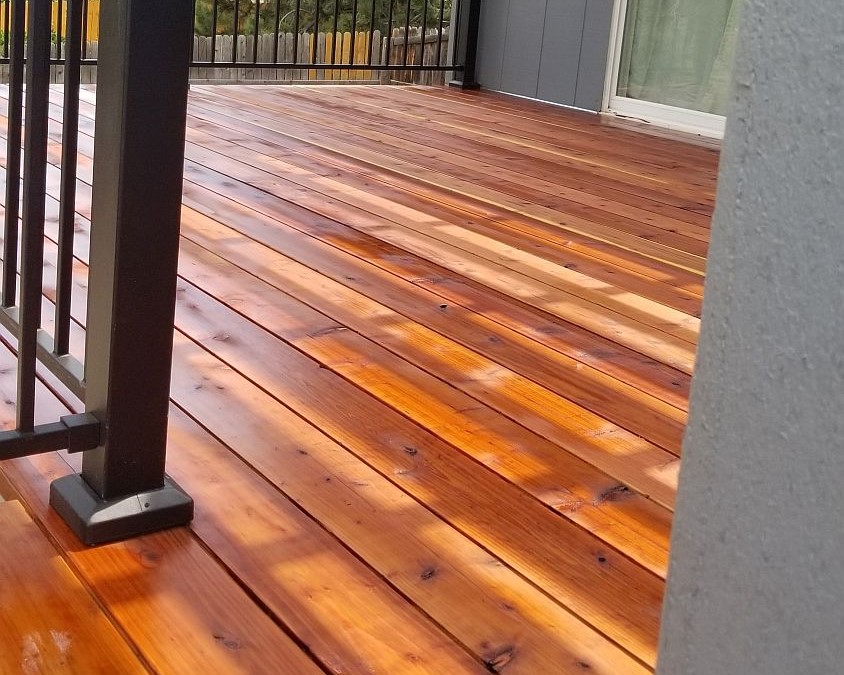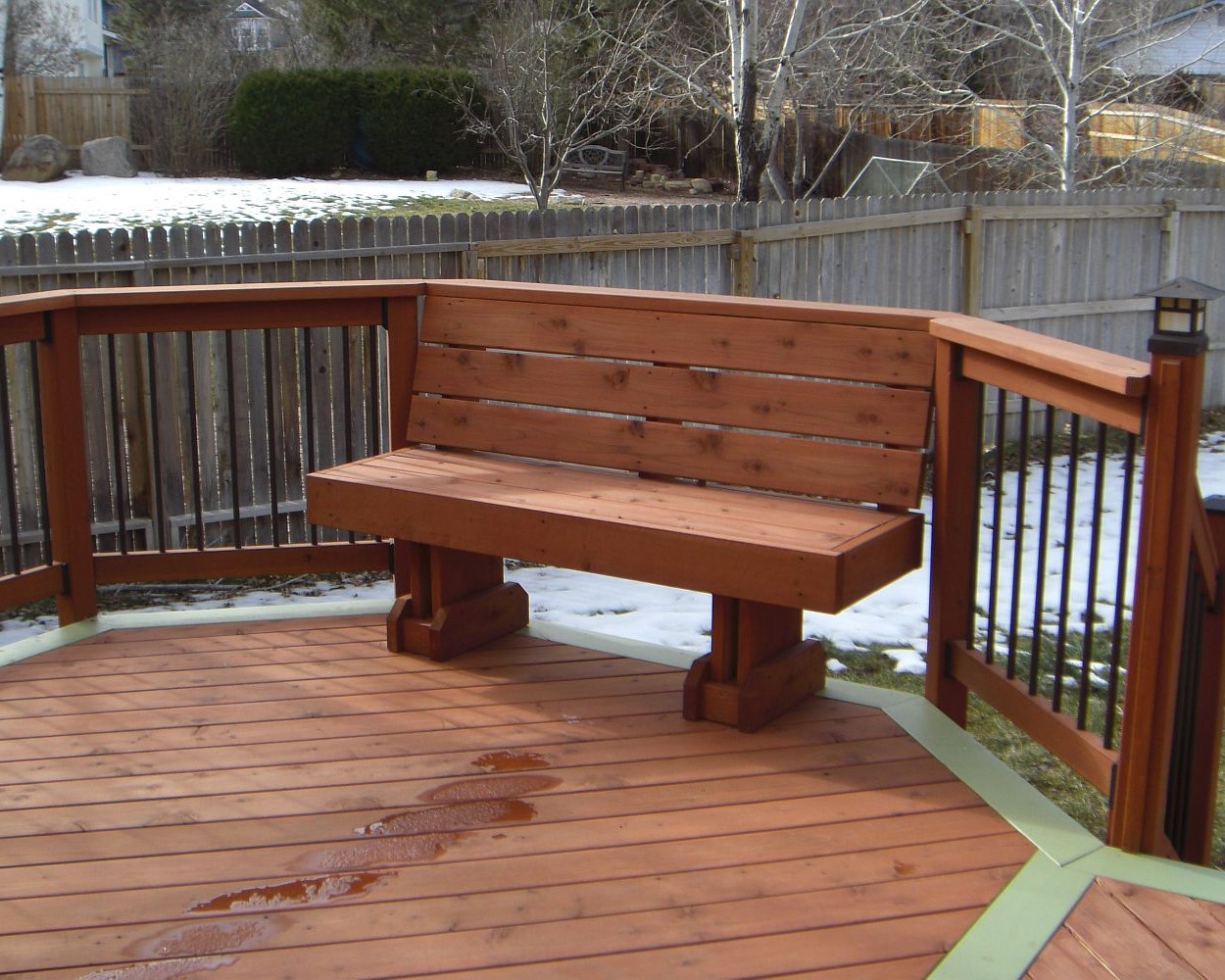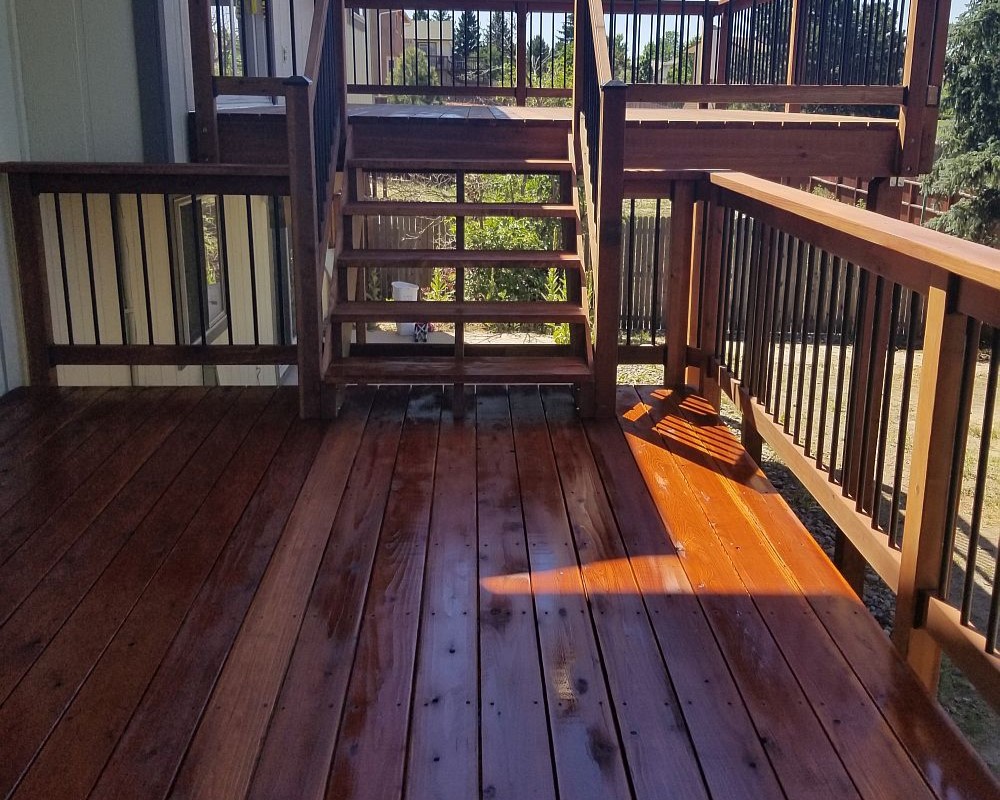Custom Wood Decks in Colorado Springs
Natural and Stained Wood Decks
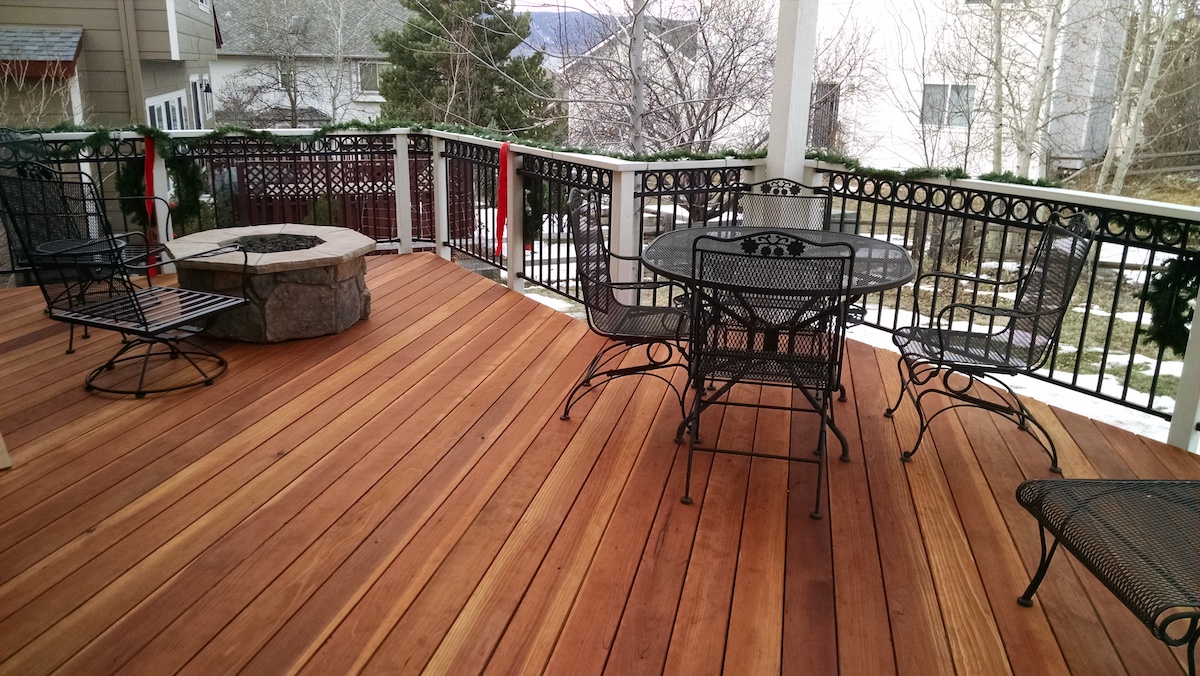
Is there any thing more attractive than the variations in color and character of natural wood? With the different grades of redwood and cedar, you have choices of durability and maintenance levels. There are many types of stain available in the current market, and this results in our customers having a wide variety of choices in durability and appearance. Depending on environmental circumstances, your maintenance schedule can vary from being done on an annual basis up to every 4 to 5 years. For more information on maintenance, please reference the Deck Refinishing section (under Services). As with all decking materials, not all wood materials are created equal.
Decks by Schmillen has done the research and has the knowledge to help you understand the differences and can assist you in making the best decision in finding functional, elegant, and cost-effective solutions for building your outdoor living space.
Types of Wood Decks
Redwood
Redwood grades fall into two major grades – Sapwood and Heartwood. Sapwood is taken from the outer areas of the tree and has some reddish-colored heartwood, but it is mainly a cream-colored wood. Heartwood comes from the tree’s center and has a warm red color that gives Redwood its name.
The next significant factor in grading is the number and size of knots in the wood – the fewer the knots, the higher the grade. When building your Redwood deck, there are three types of Redwood to consider:
- Deck Common Redwood – This comes from the outer areas of the tree and will have more sapwood than heartwood so that the color will be lighter. It is an economical choice for building a Redwood deck.
- B-Grade Redwood – It also has a combination of sap and heart woods, but the B-grading means it has fewer and smaller knots than Deck Common. B-grade will also have a lighter color due to the mixture of sap and heart woods.
- Heart Redwood – This is the wood from the tree’s center. There is no sapwood at all, so you get the desired red color that many people are looking for with a Redwood deck. Heart Redwood is also the most durable of all the grades. Natural tannins give the wood natural resistance to insects and decay.
Cedar
Cedar is another popular choice because it has many of the same characteristics as Redwood. In addition, Cedar wood comes from British Columbia, Canada. As with the Redwood forests, BC’s Cedar old- and new-growth forests are heavily regulated and monitored.
Cedar is one of the most beautiful and durable woods available. Decking is usually made from the tree’s heartwood, which helps it resist moisture, rot, and insects. Fresh-cut Cedar will provide decking boards in a wide range of honey/peach shades of light brown. However, the coloring will vary depending on the type of Cedar used. For example, Western Red Cedar heartwood will have a red or pink-hued brown, and the sapwood will be nearly white. On the other hand, the heartwood of Eastern White Cedar is a light brown (sometimes with a reddish tinge), and its sapwood is white-tinged with yellow.
Decking Cedar usually comes in two different grades:
-
- Architect Knotty – This is a sound and tight decking which limits both the size and quality of knots. It has a smooth, skip-free dressing, which makes it an excellent deck surface.
- Custom Knotty – This grade produces decking boards with a hole-free knotty appearance. It may be applied as received and is an economical material for your Cedar deck.
Click on images below to view larger…


